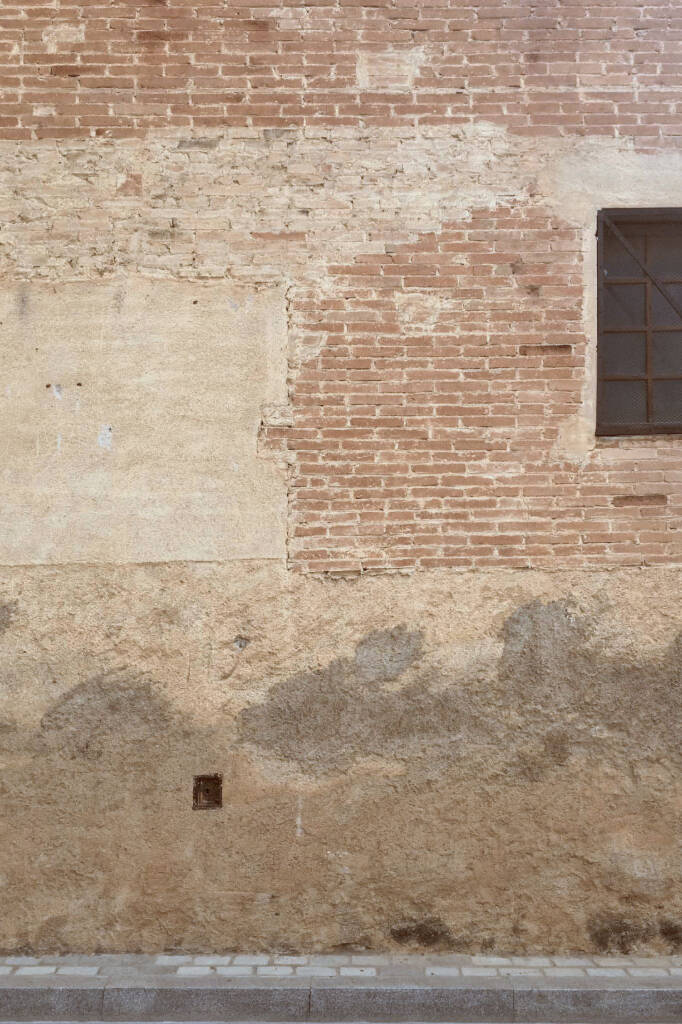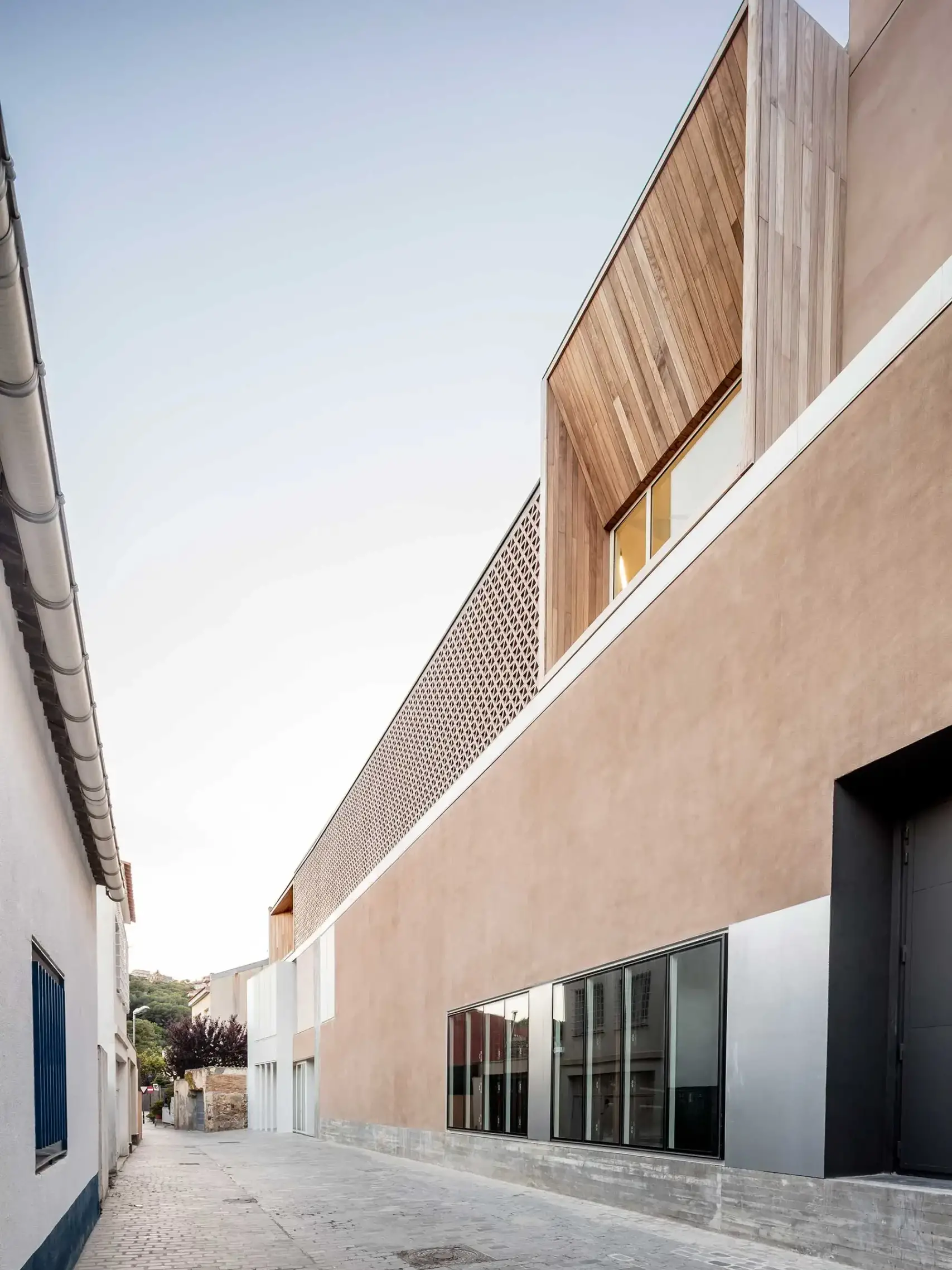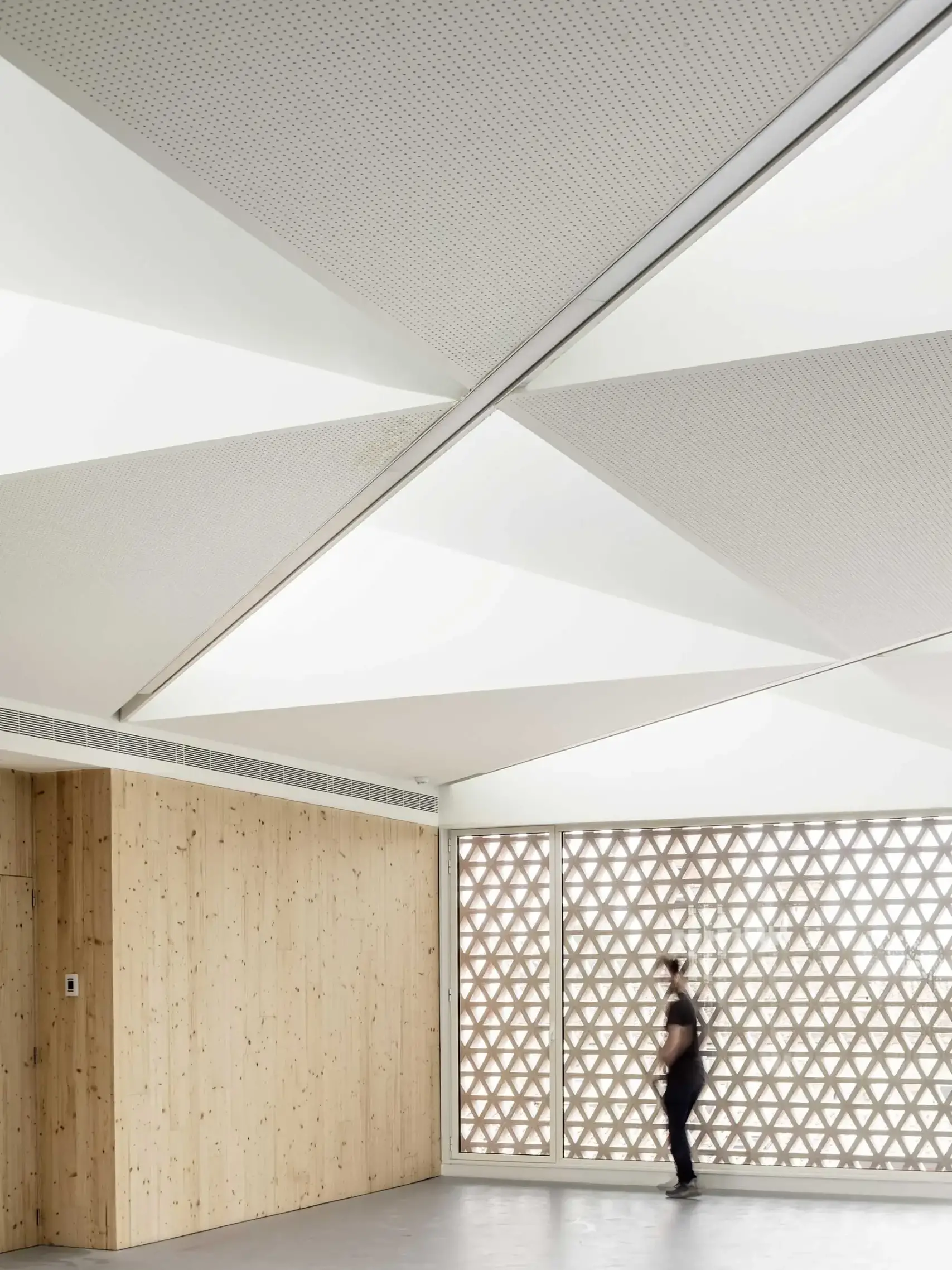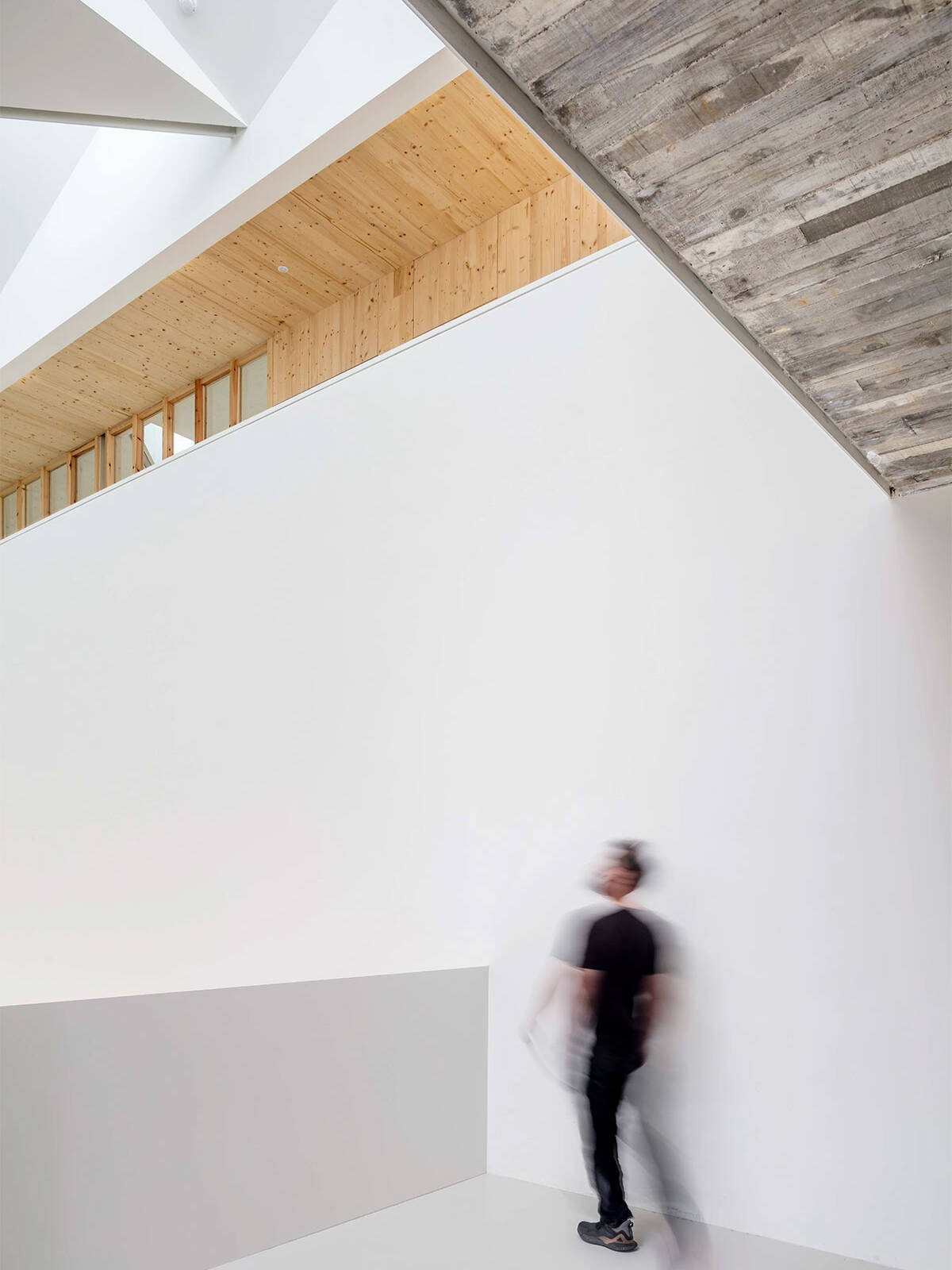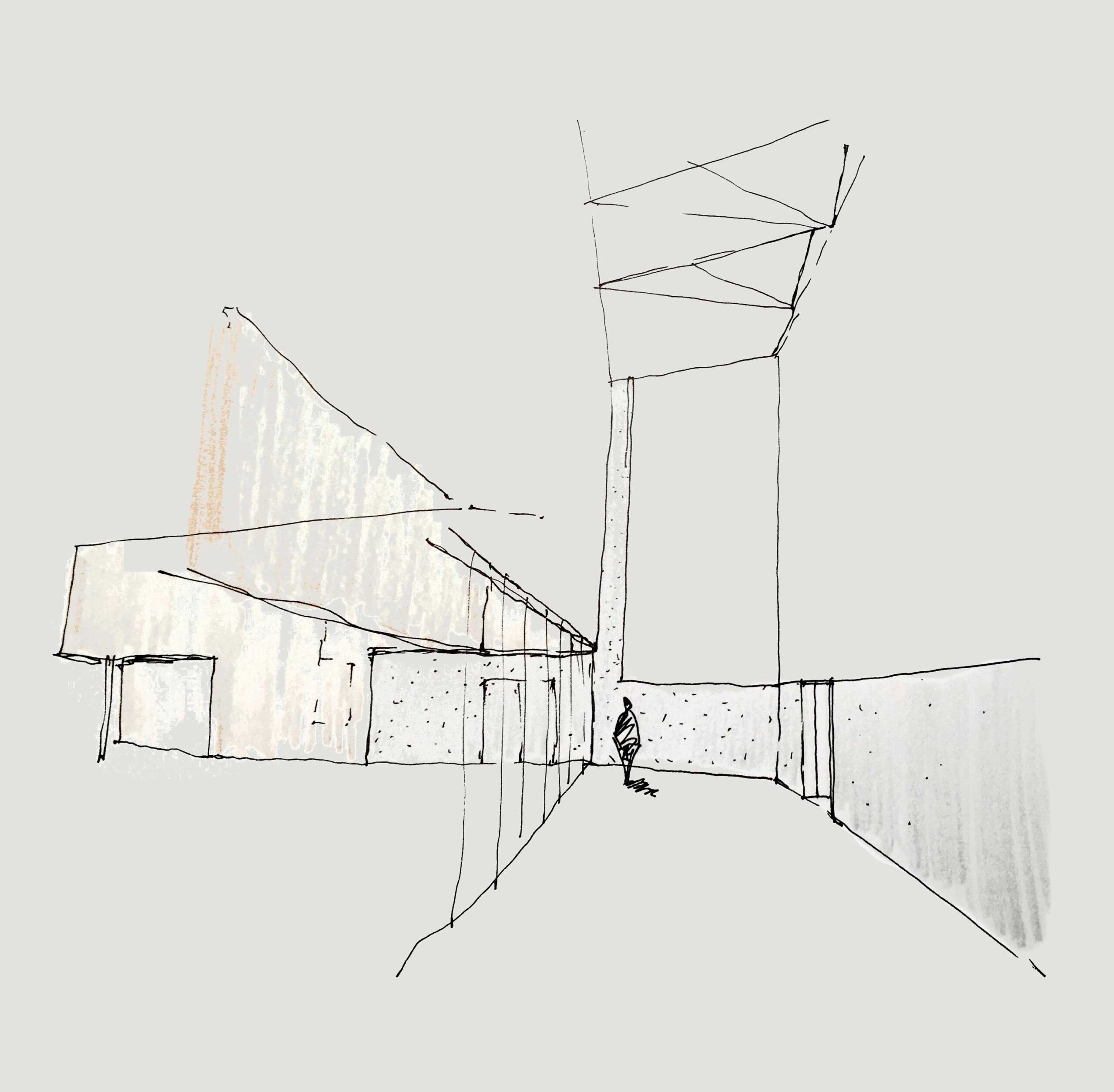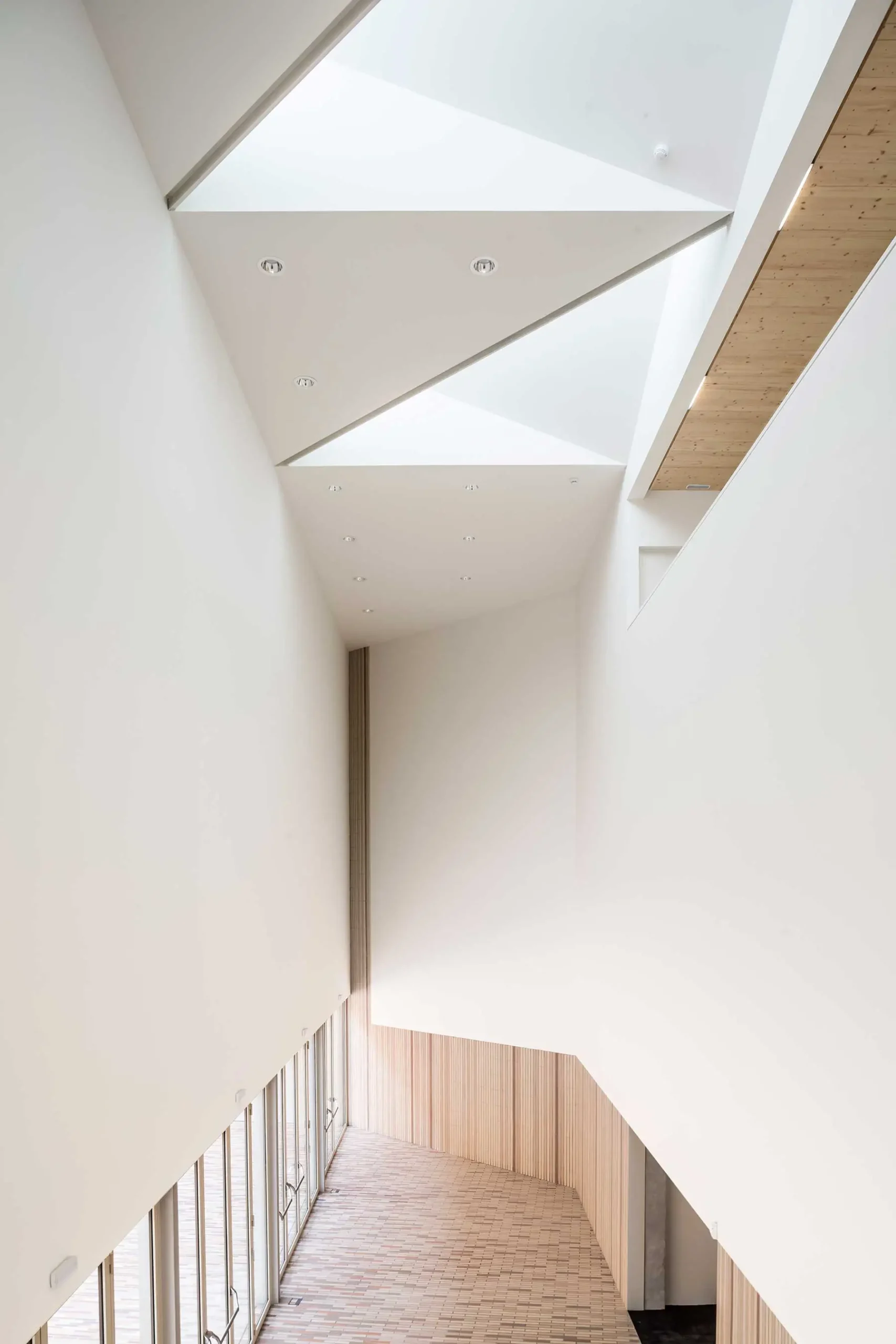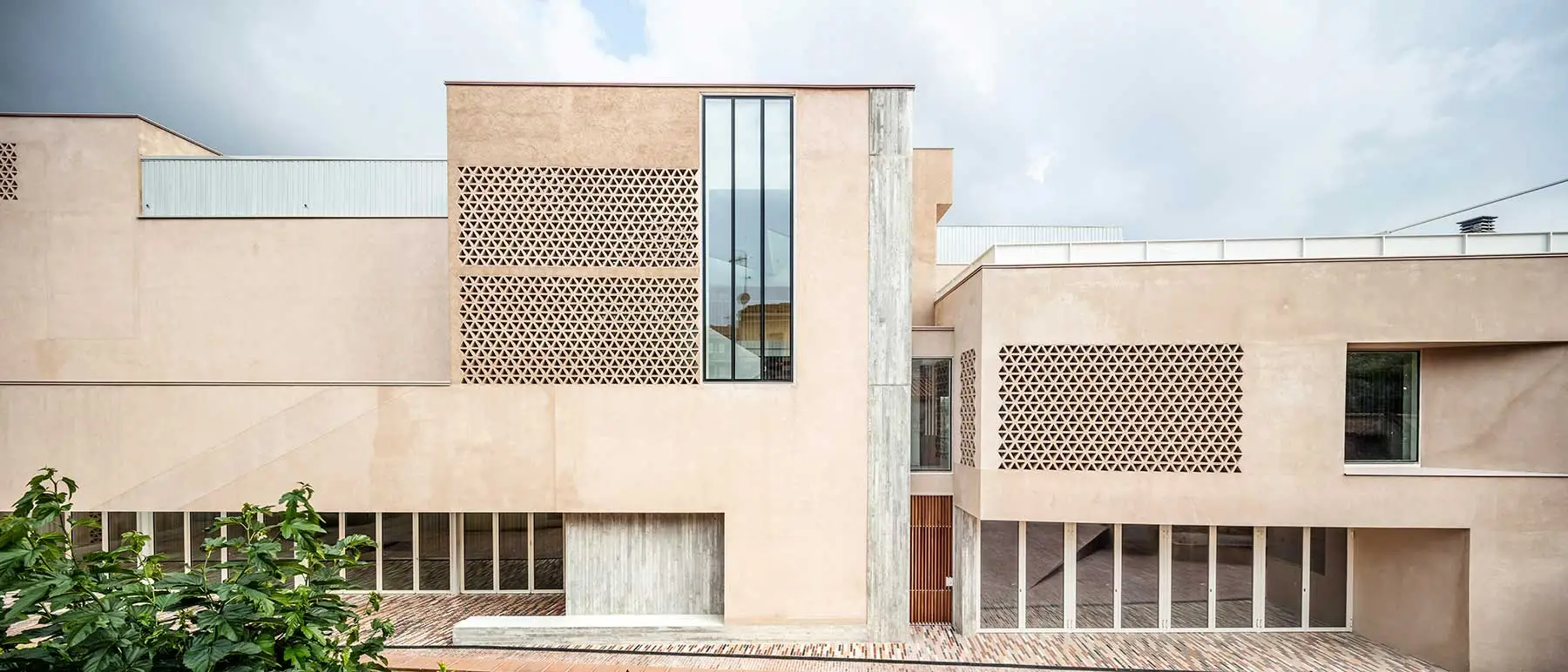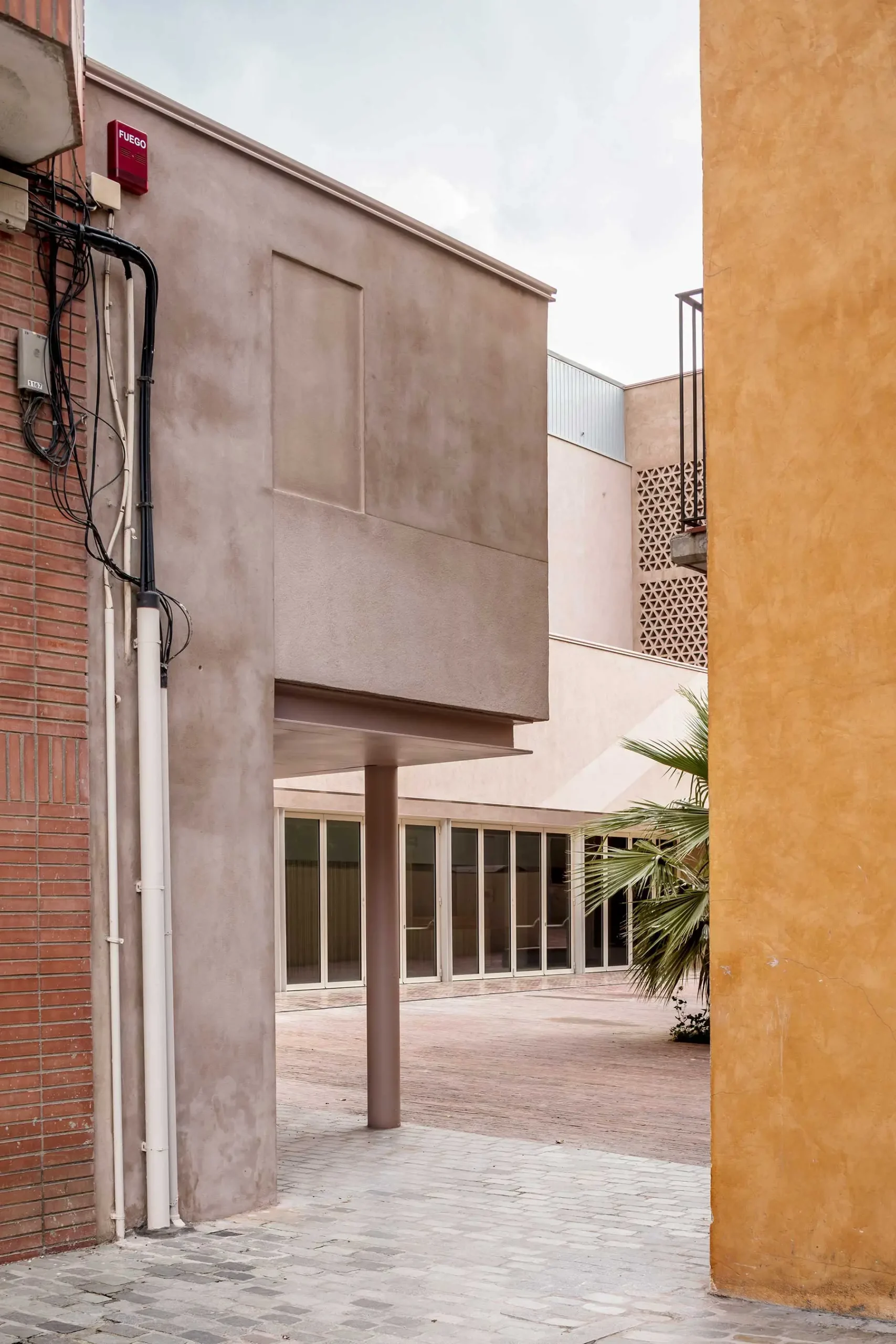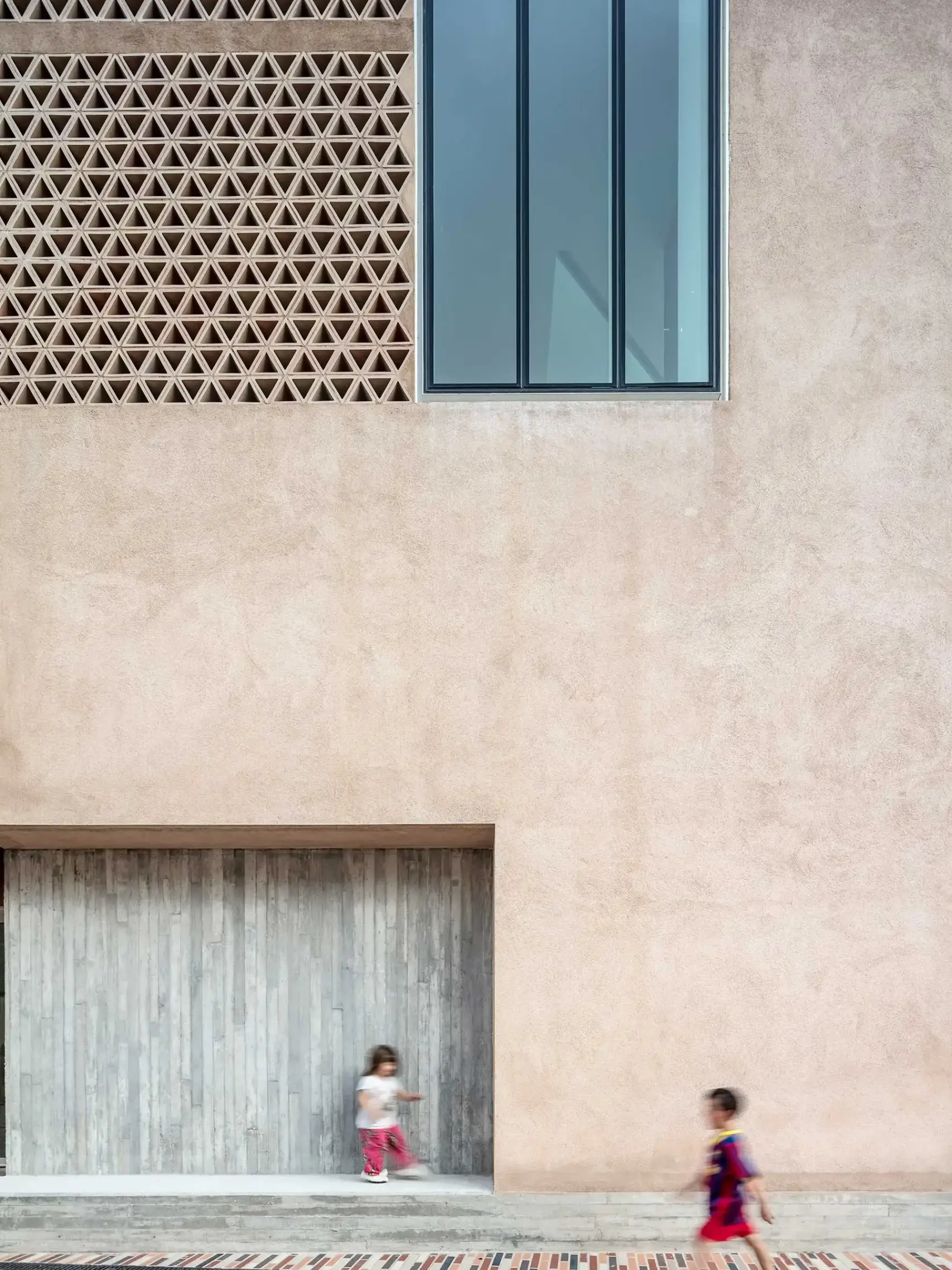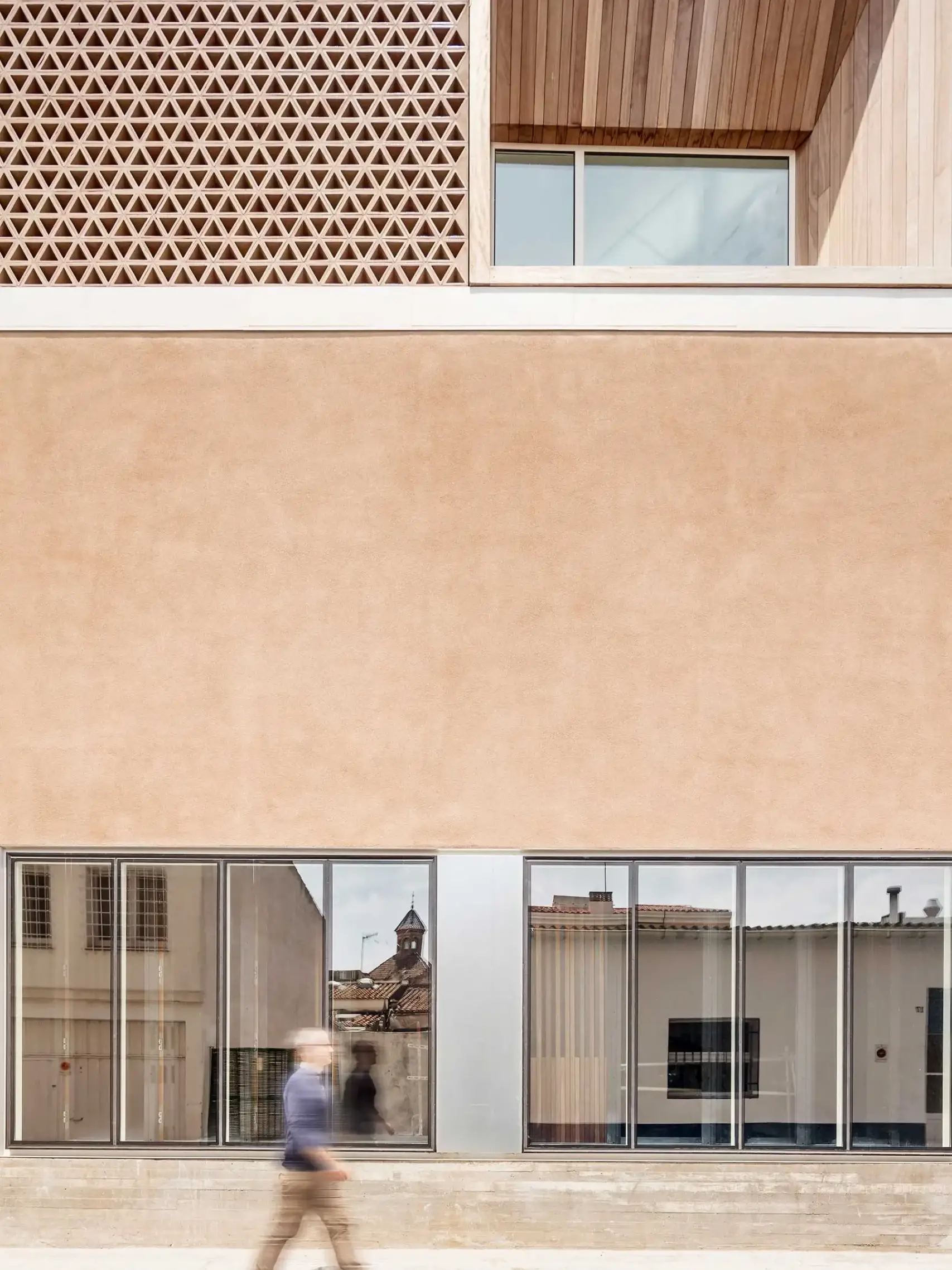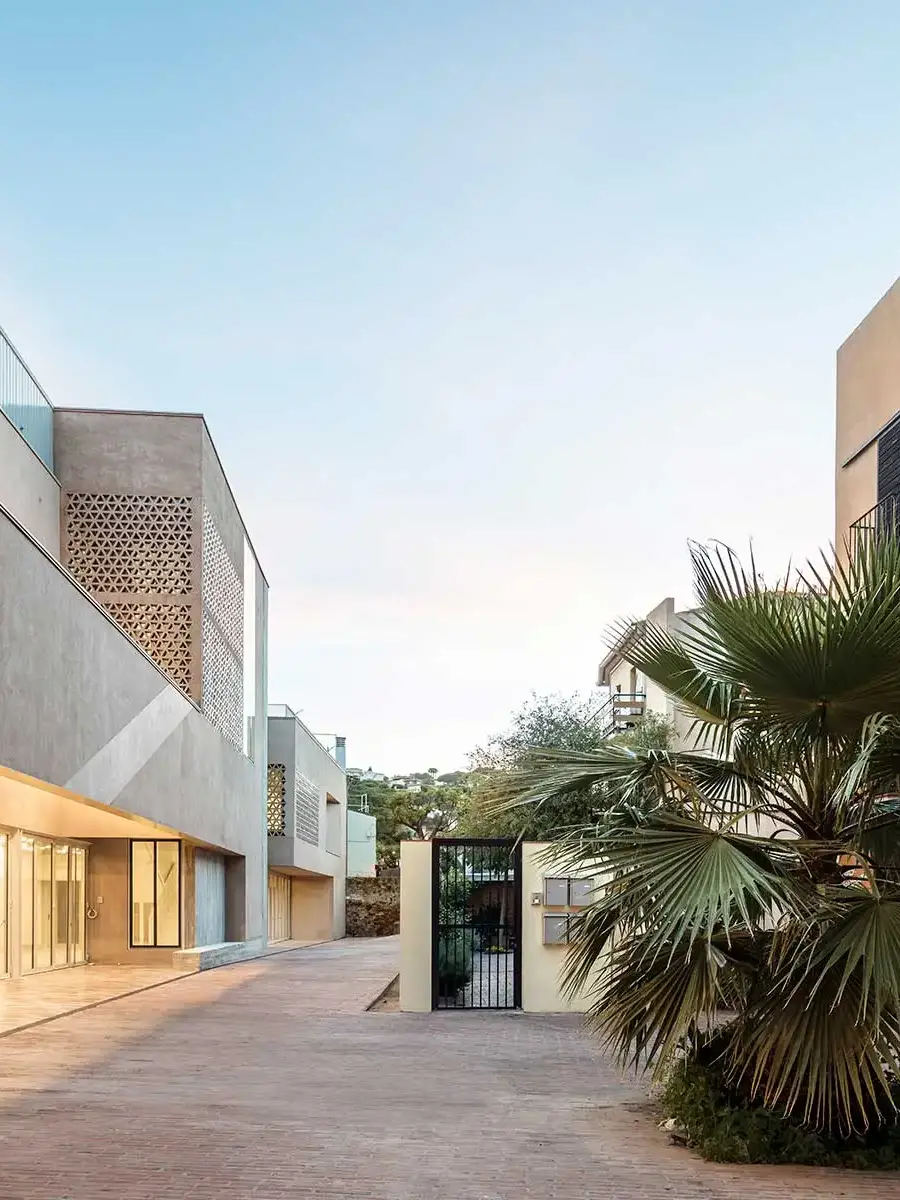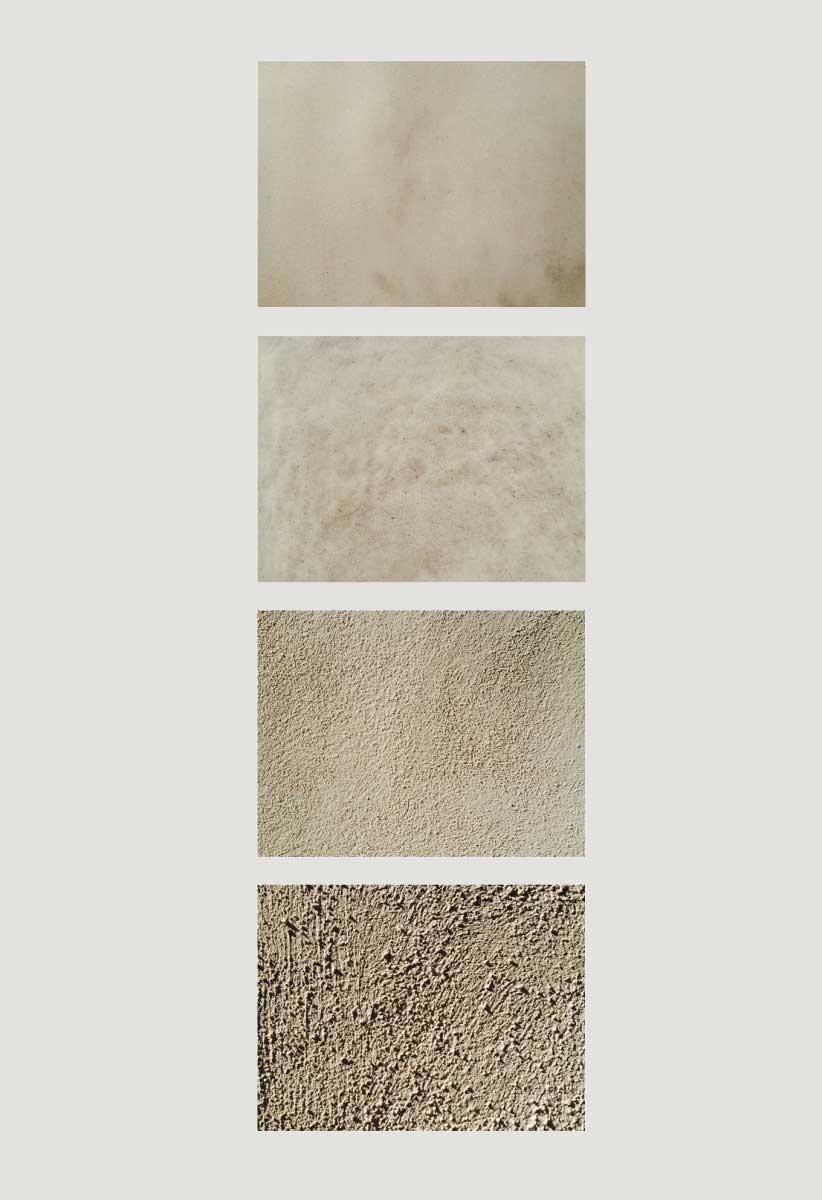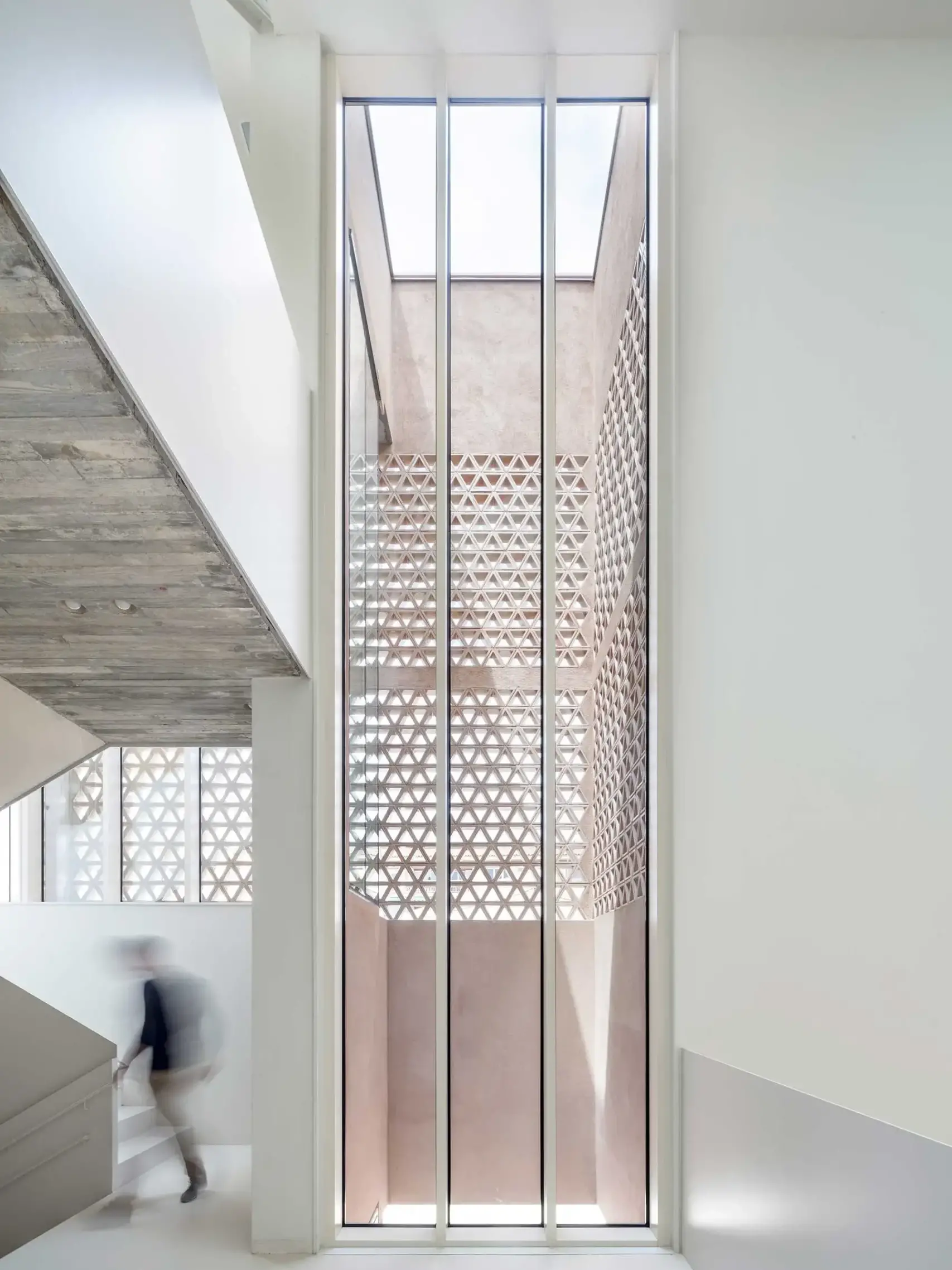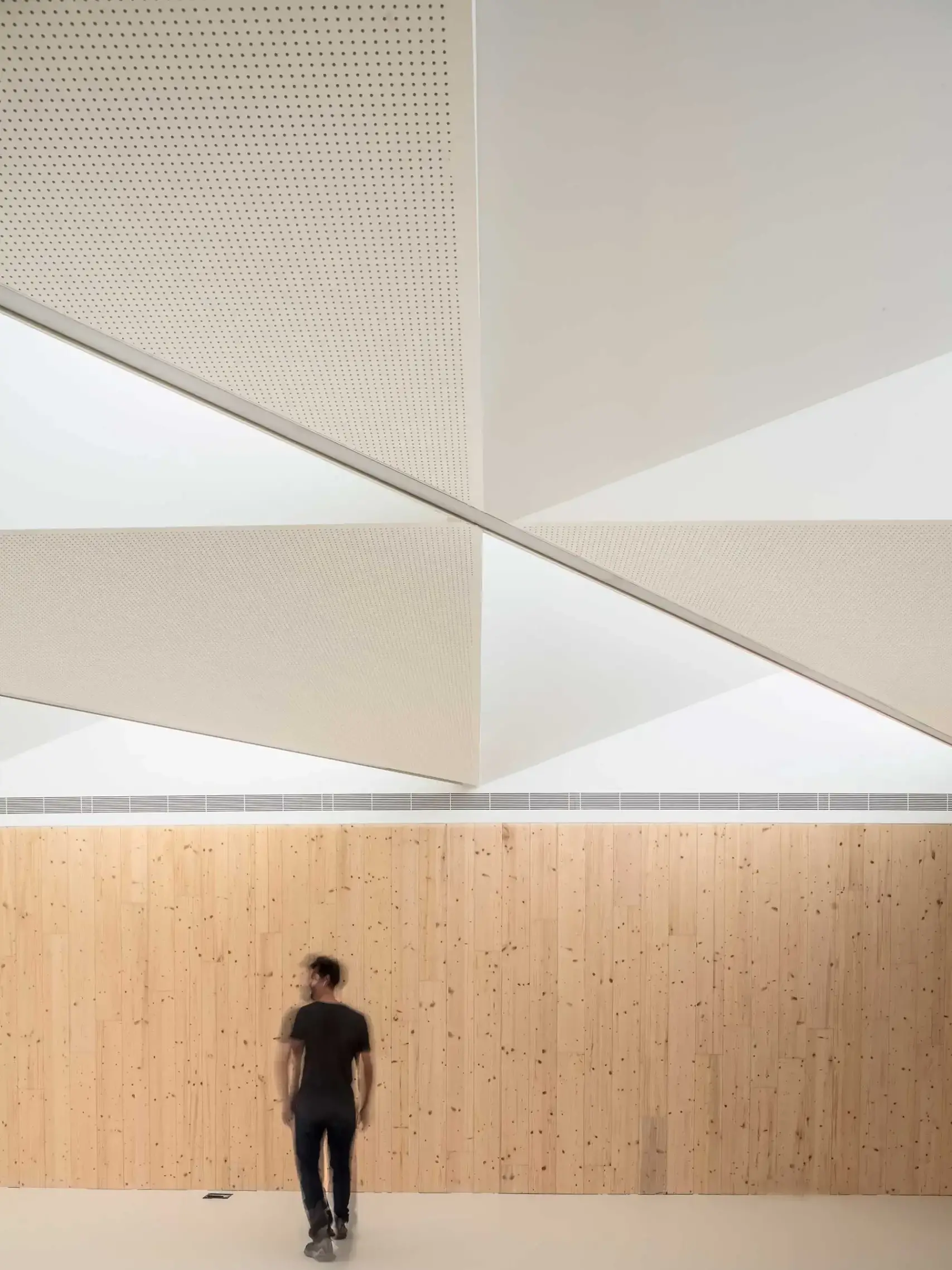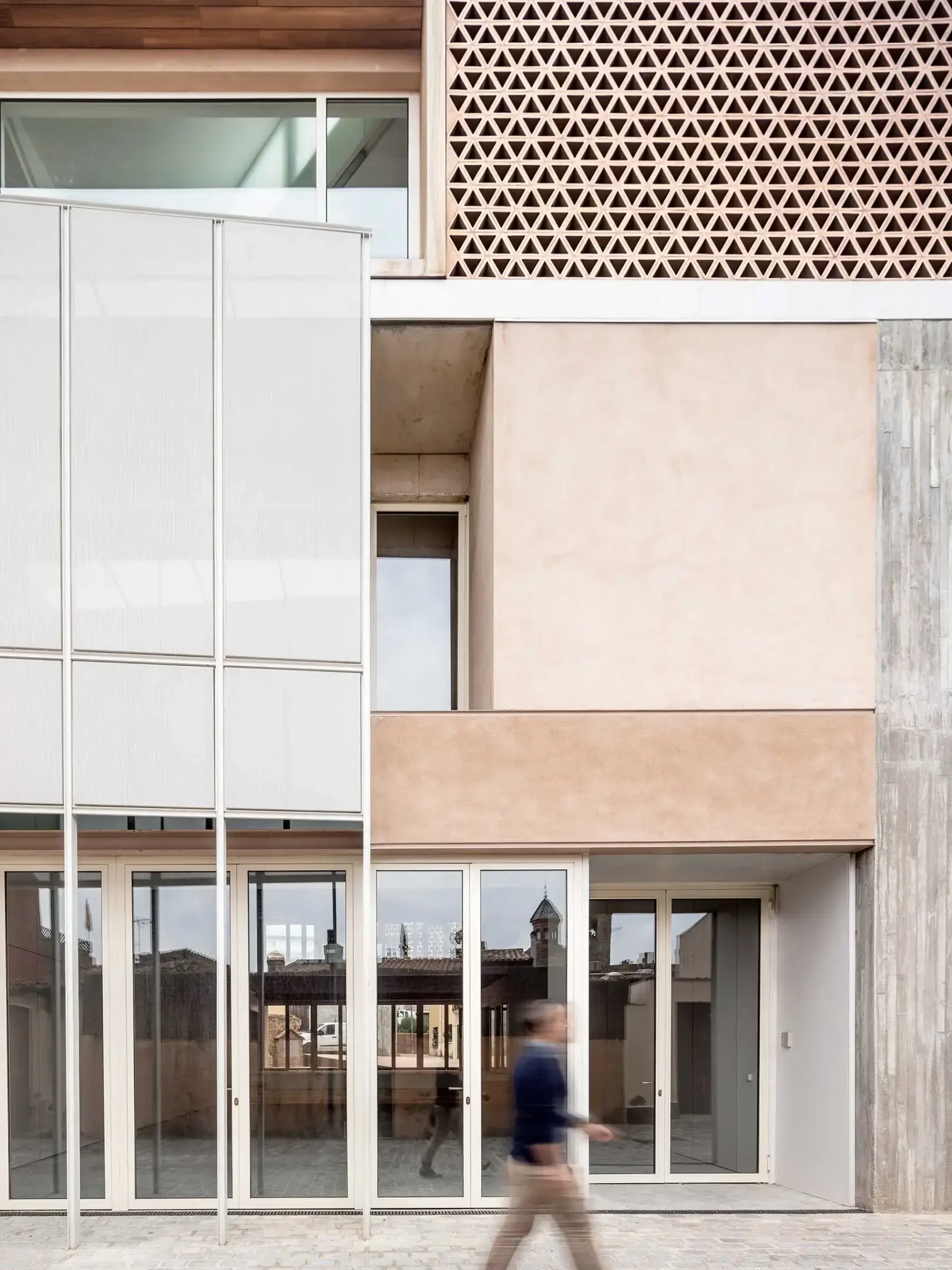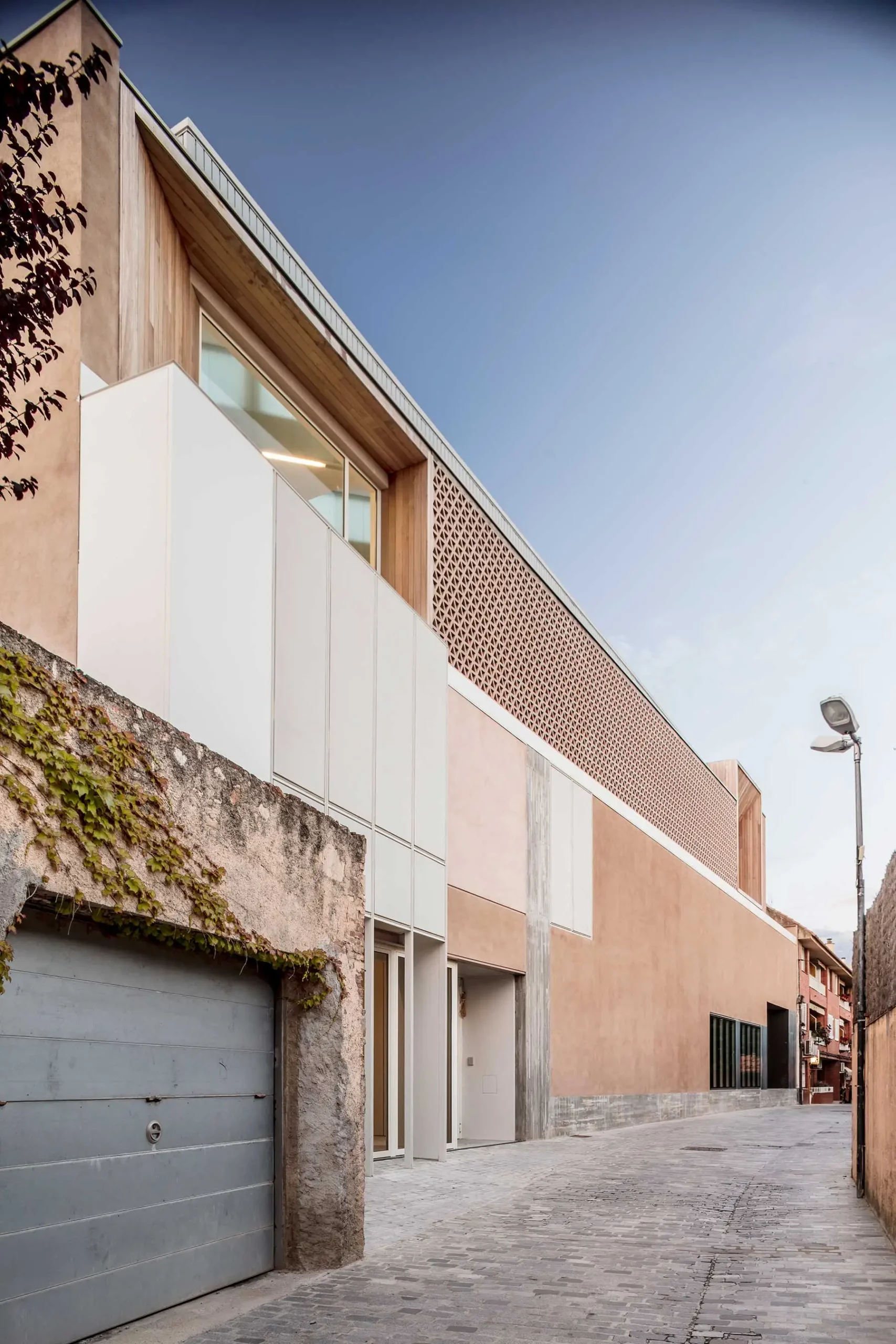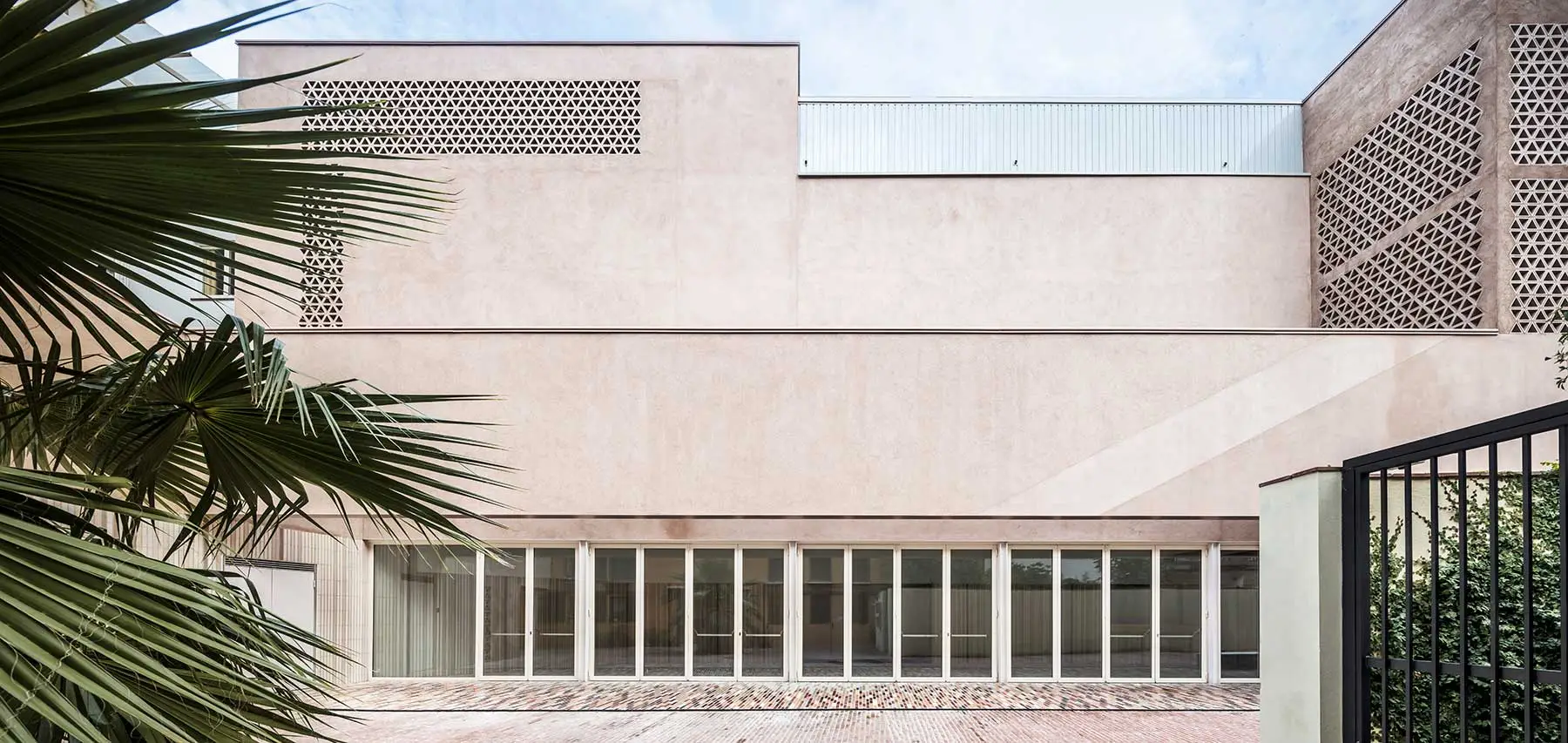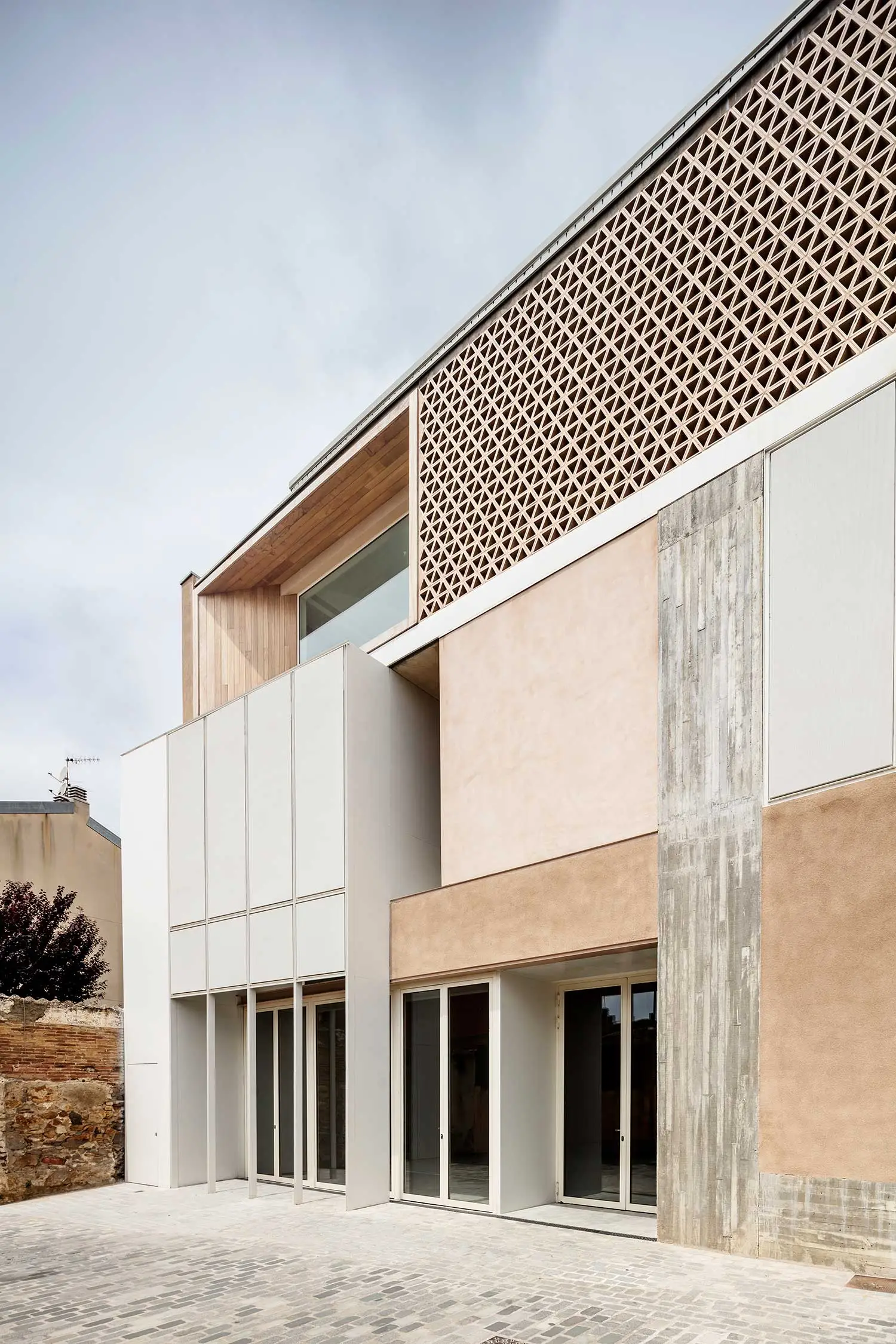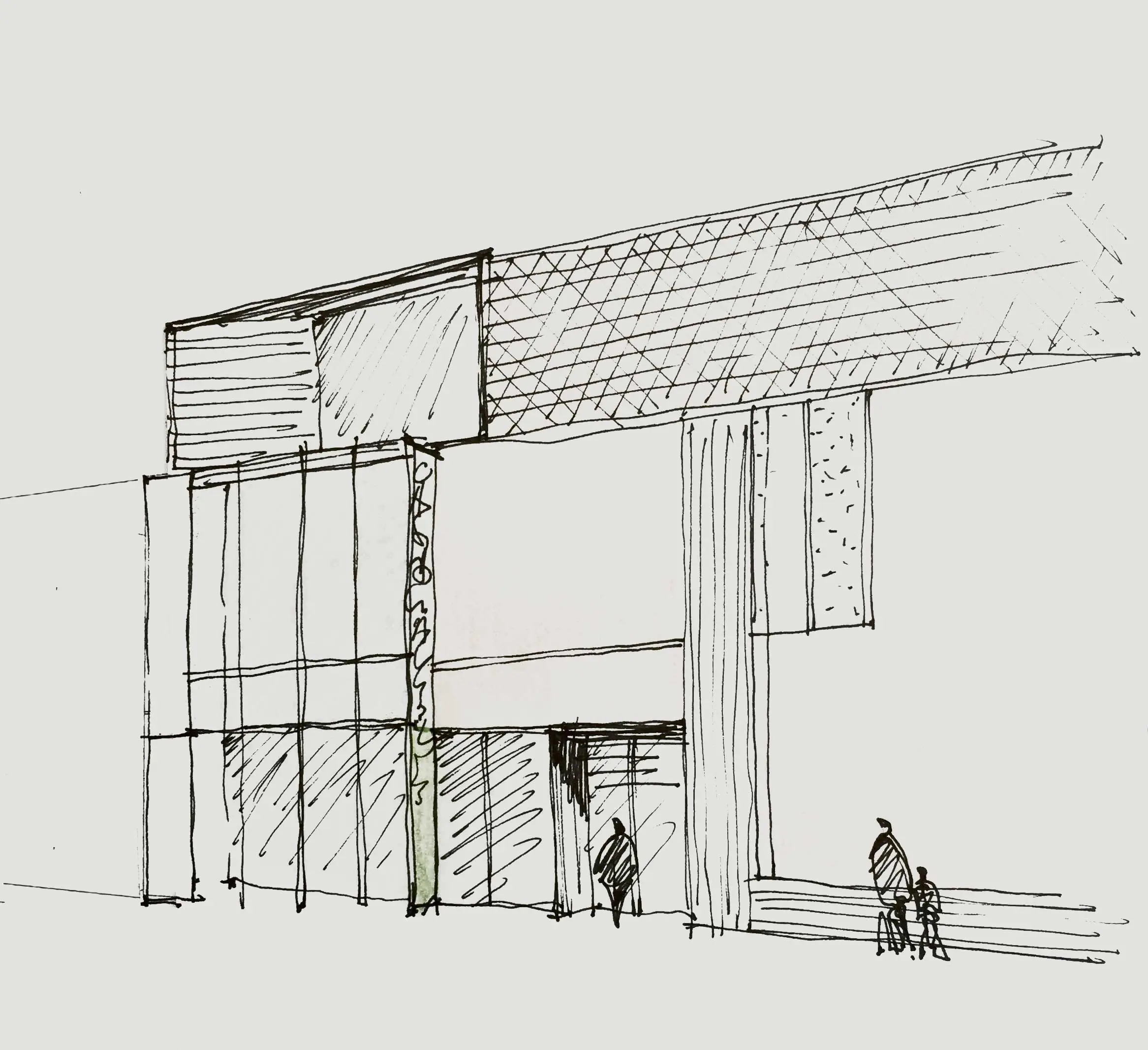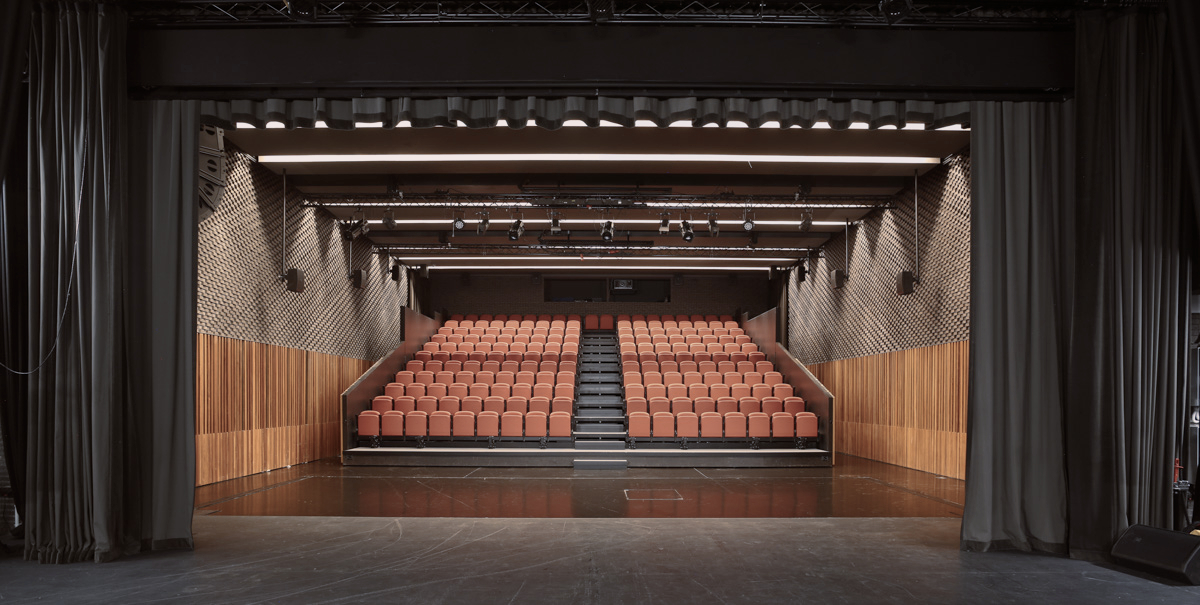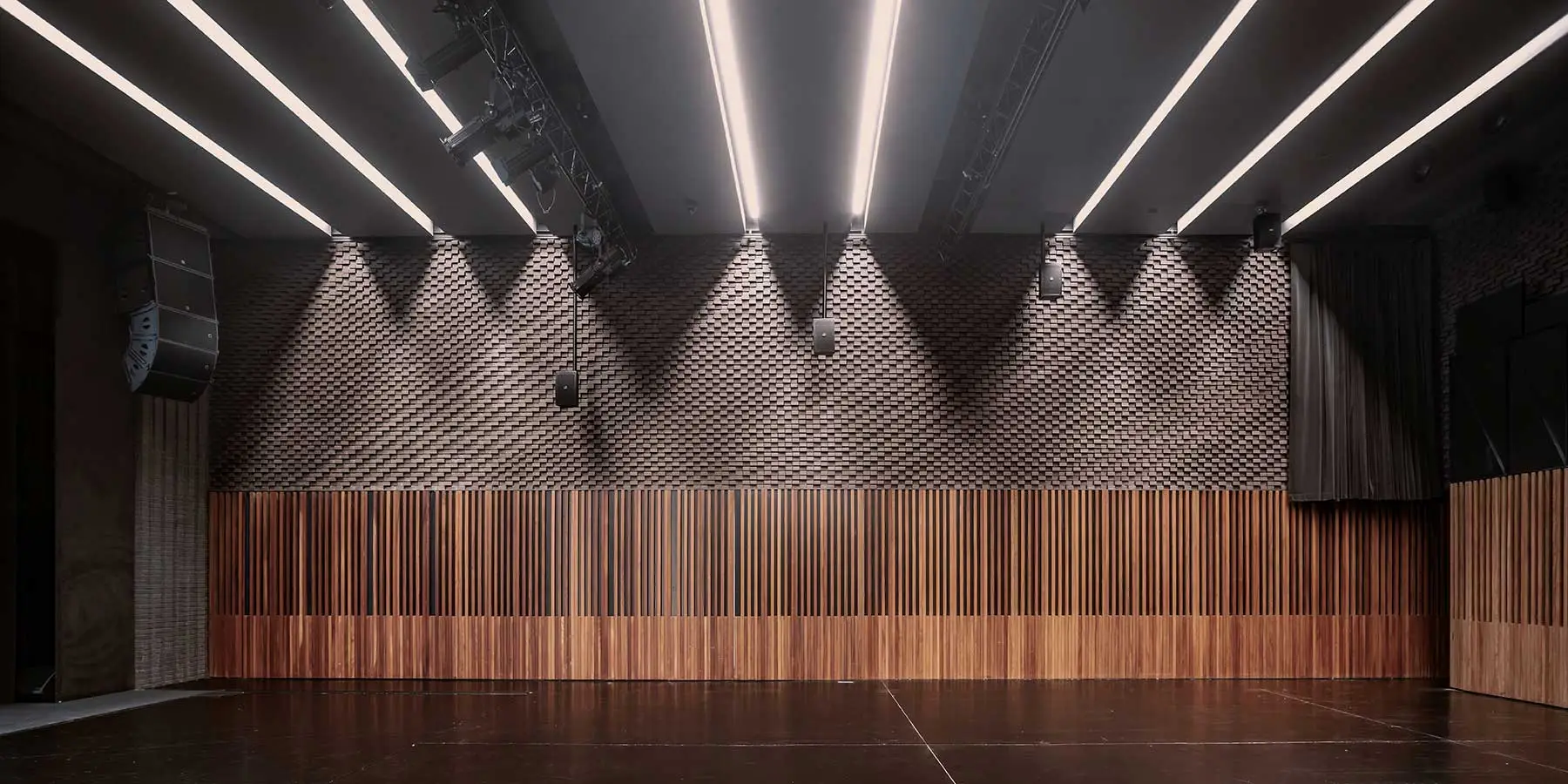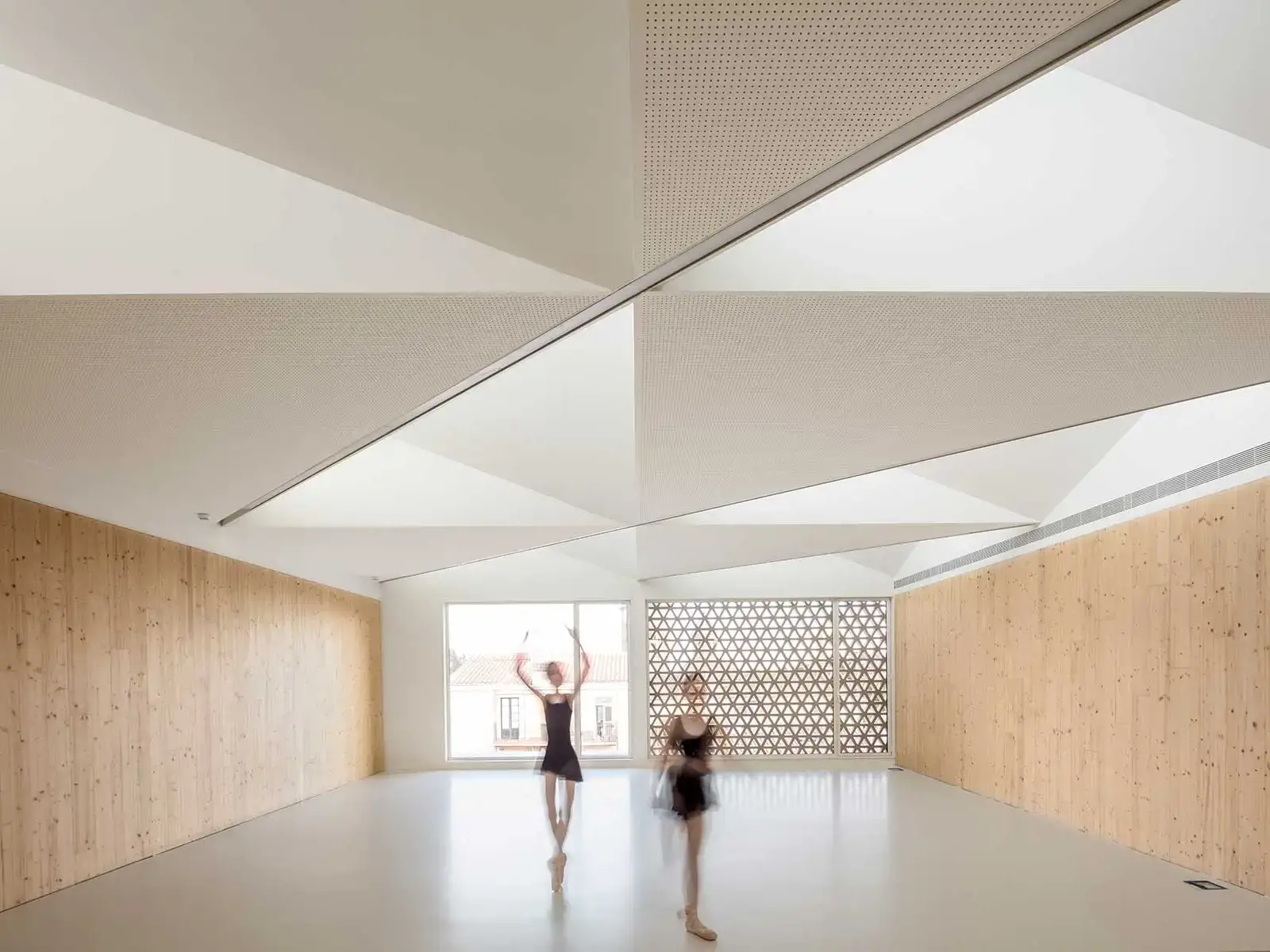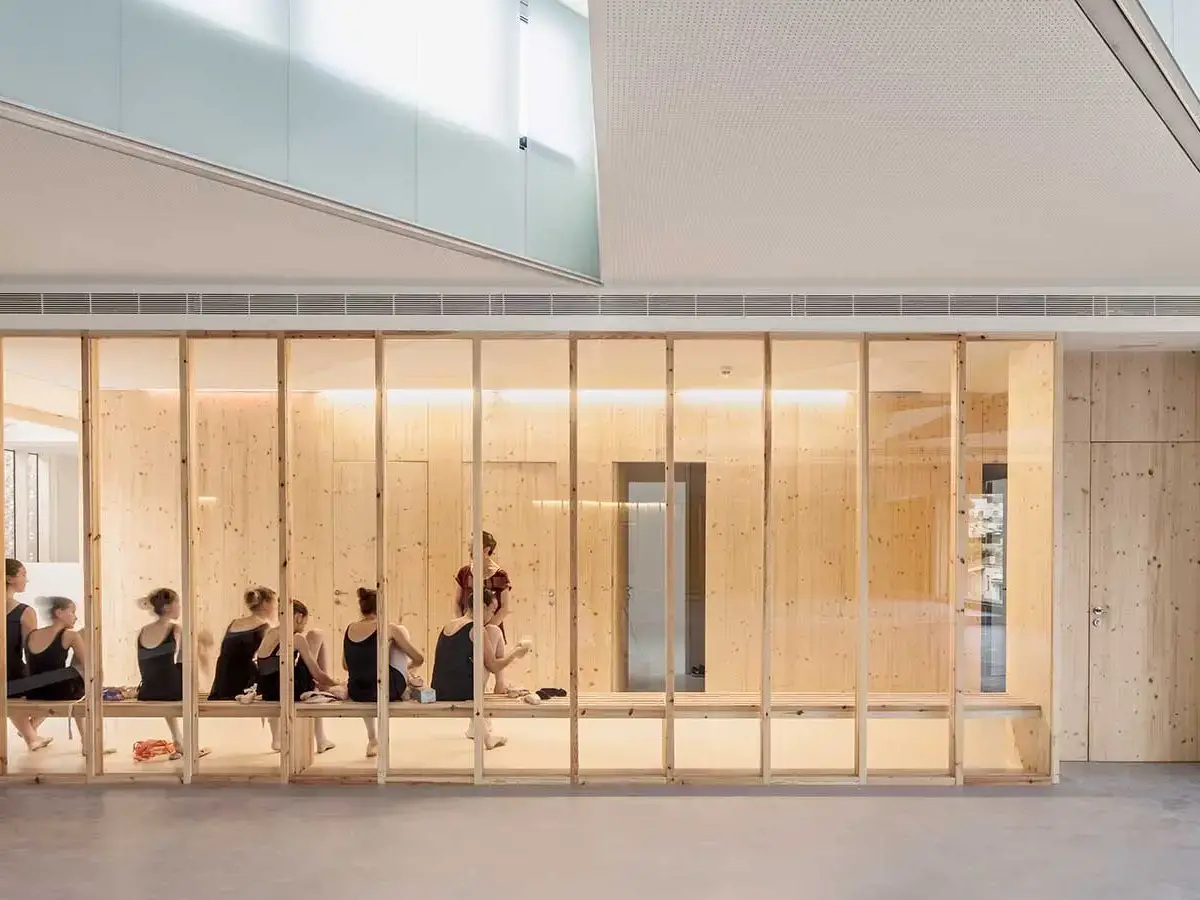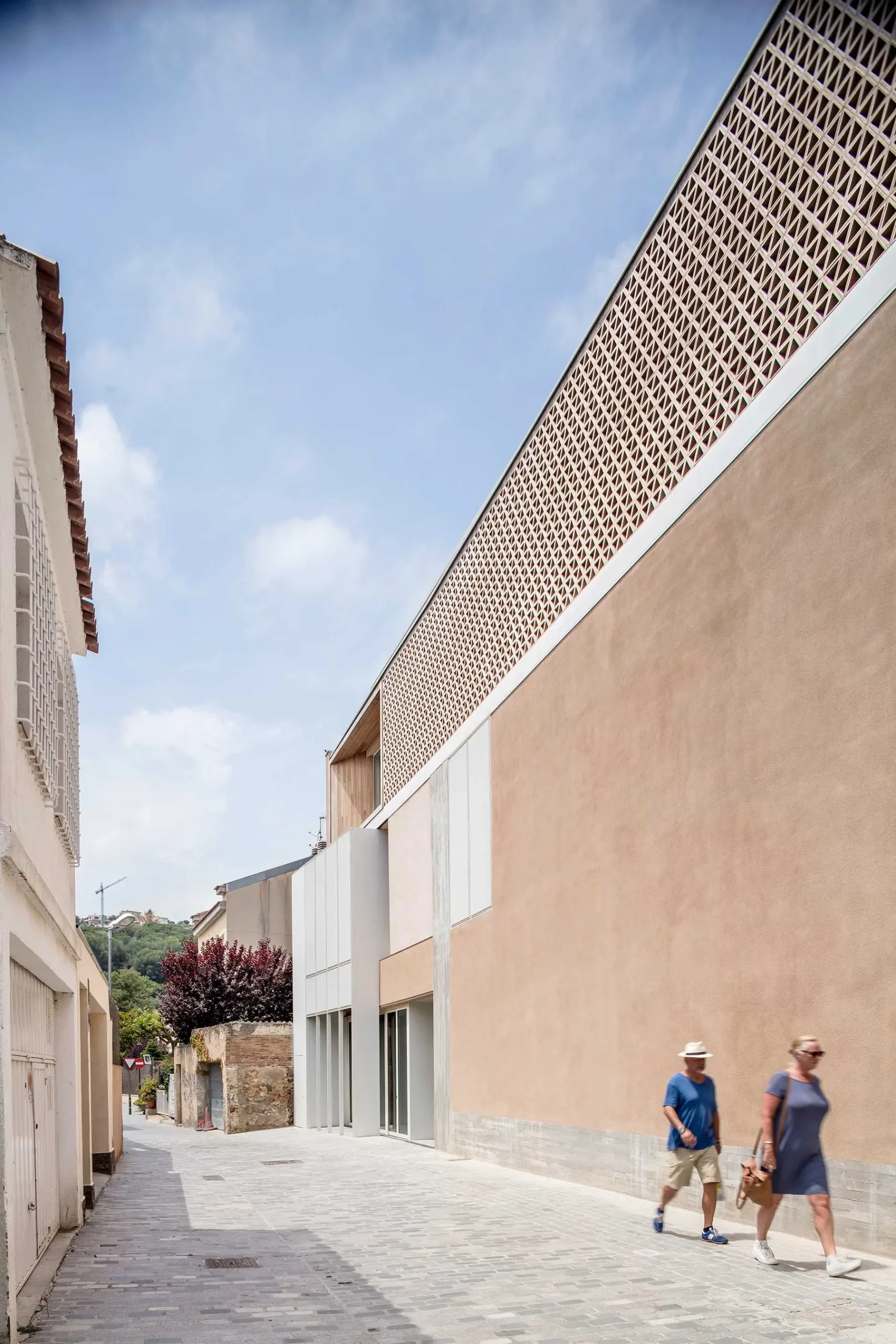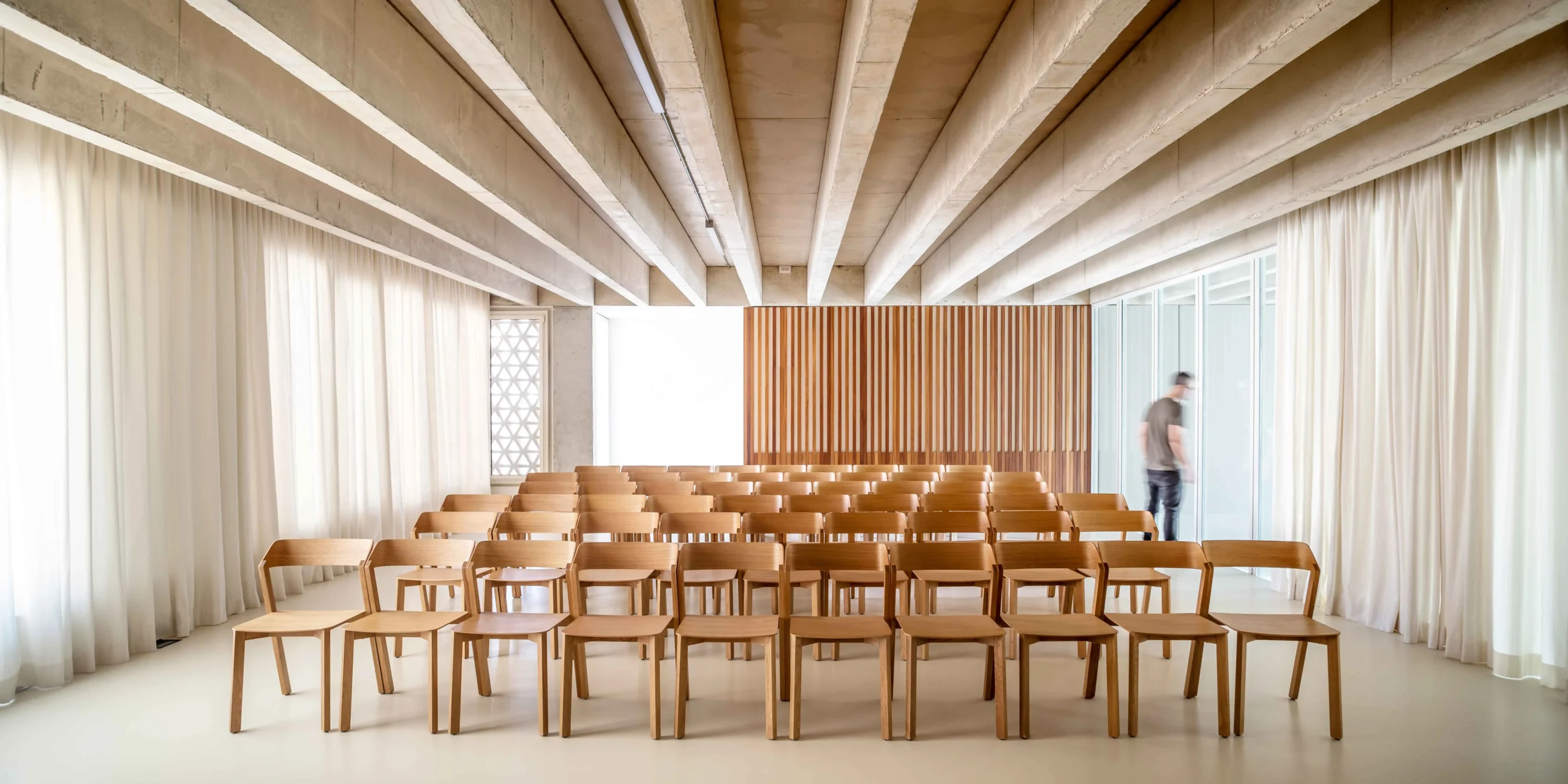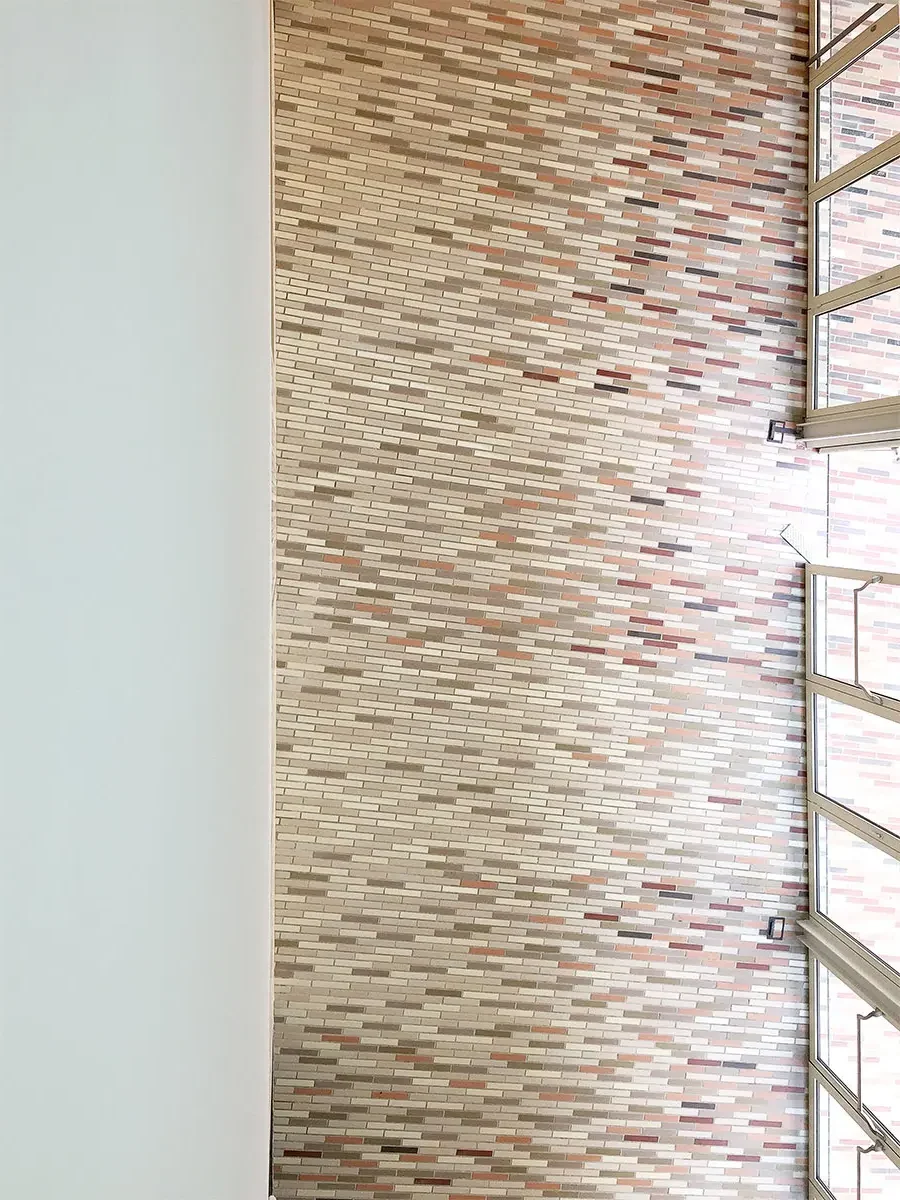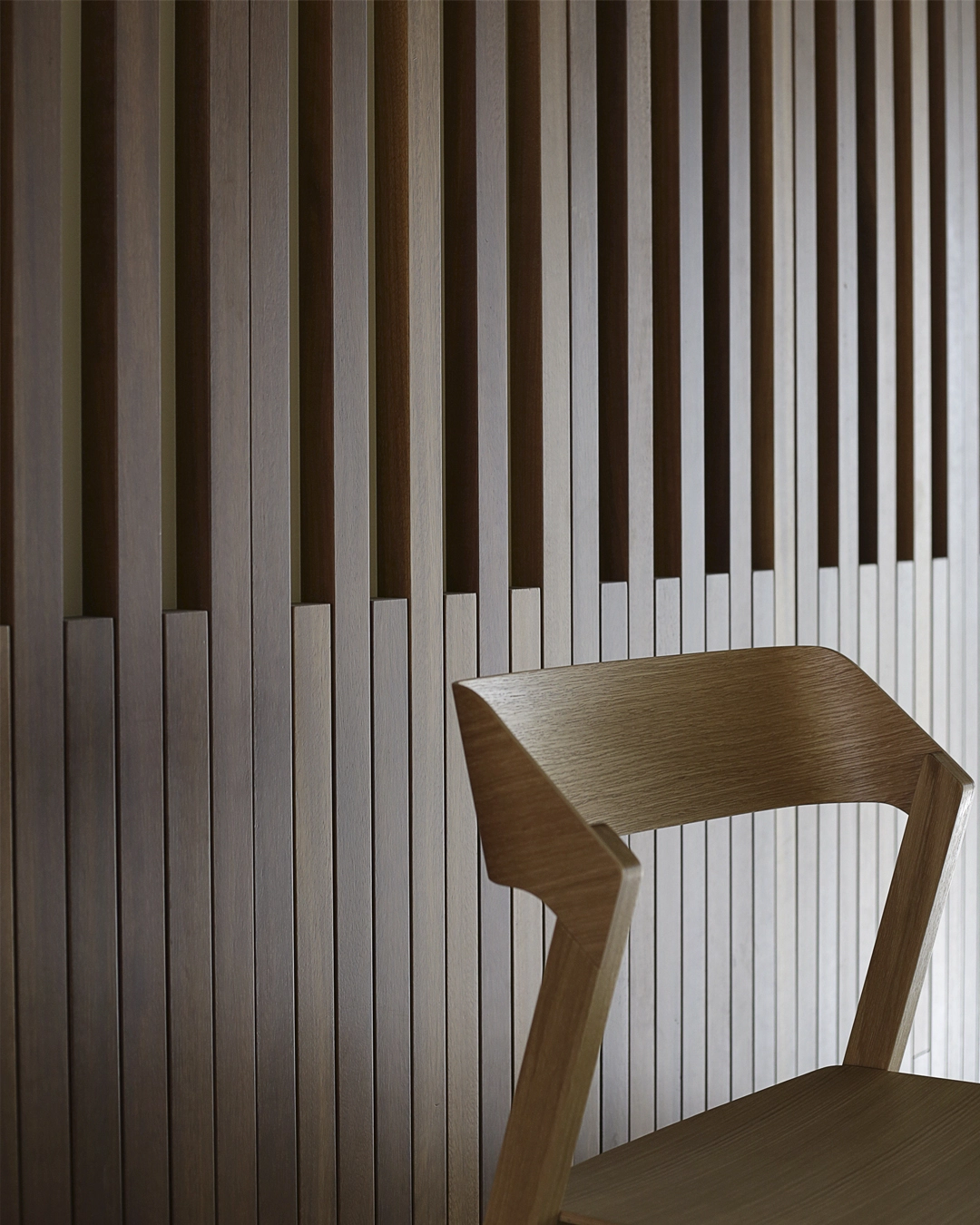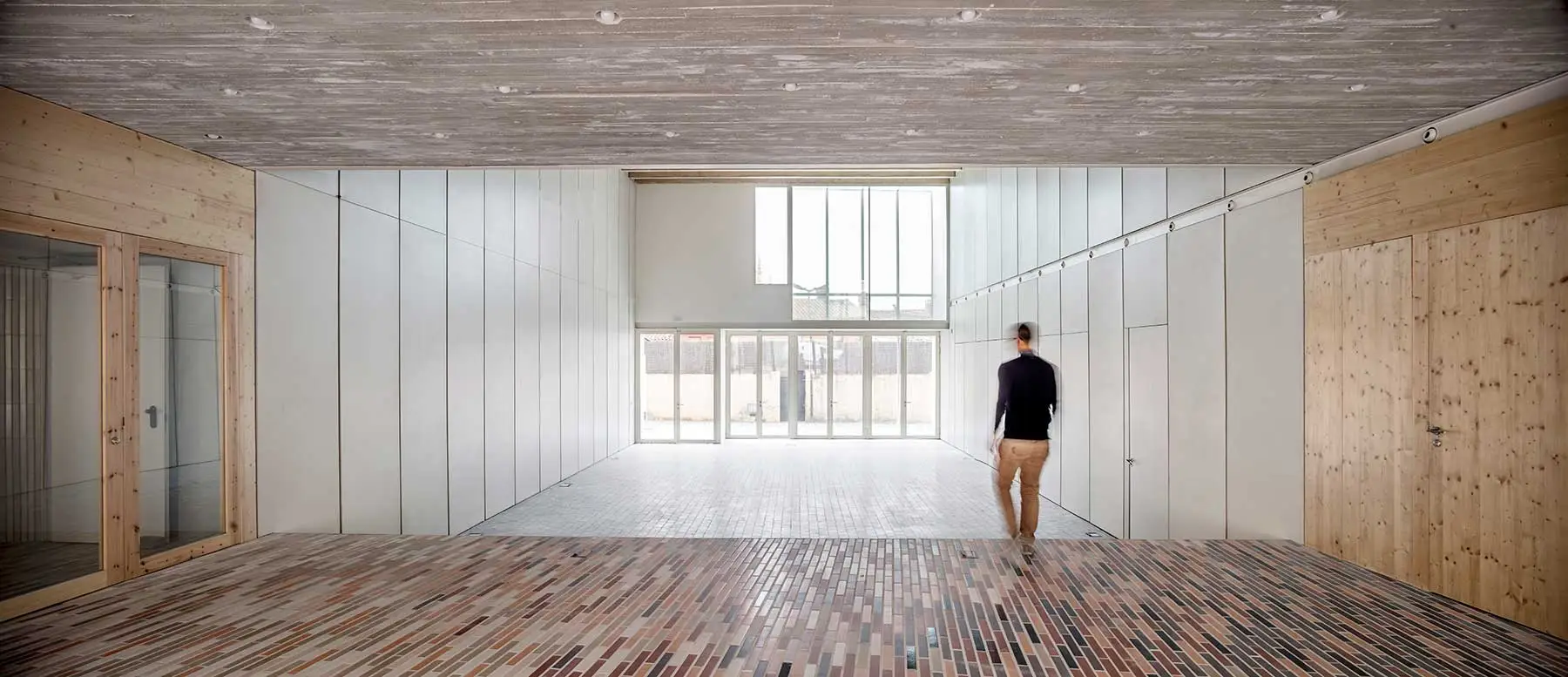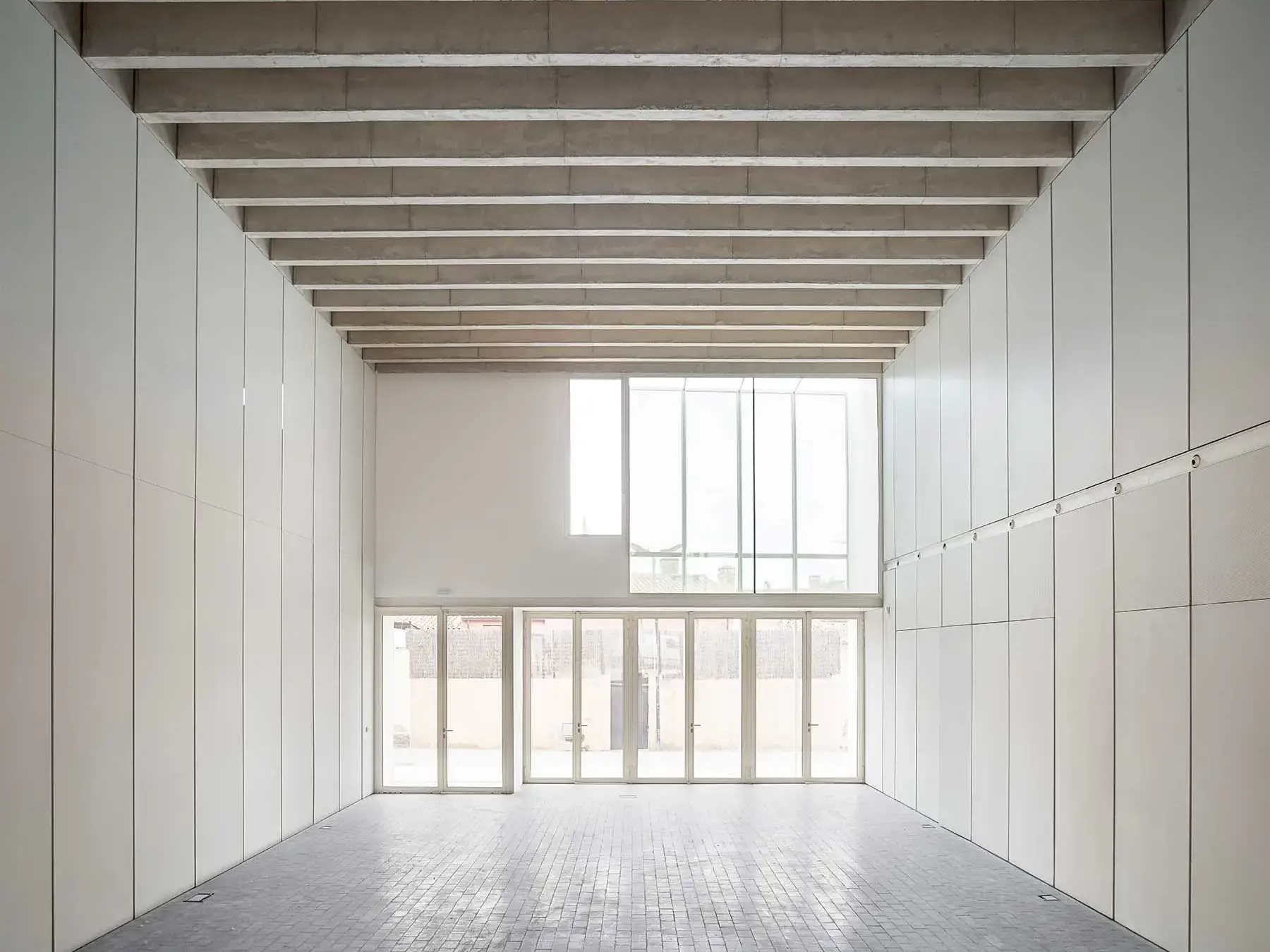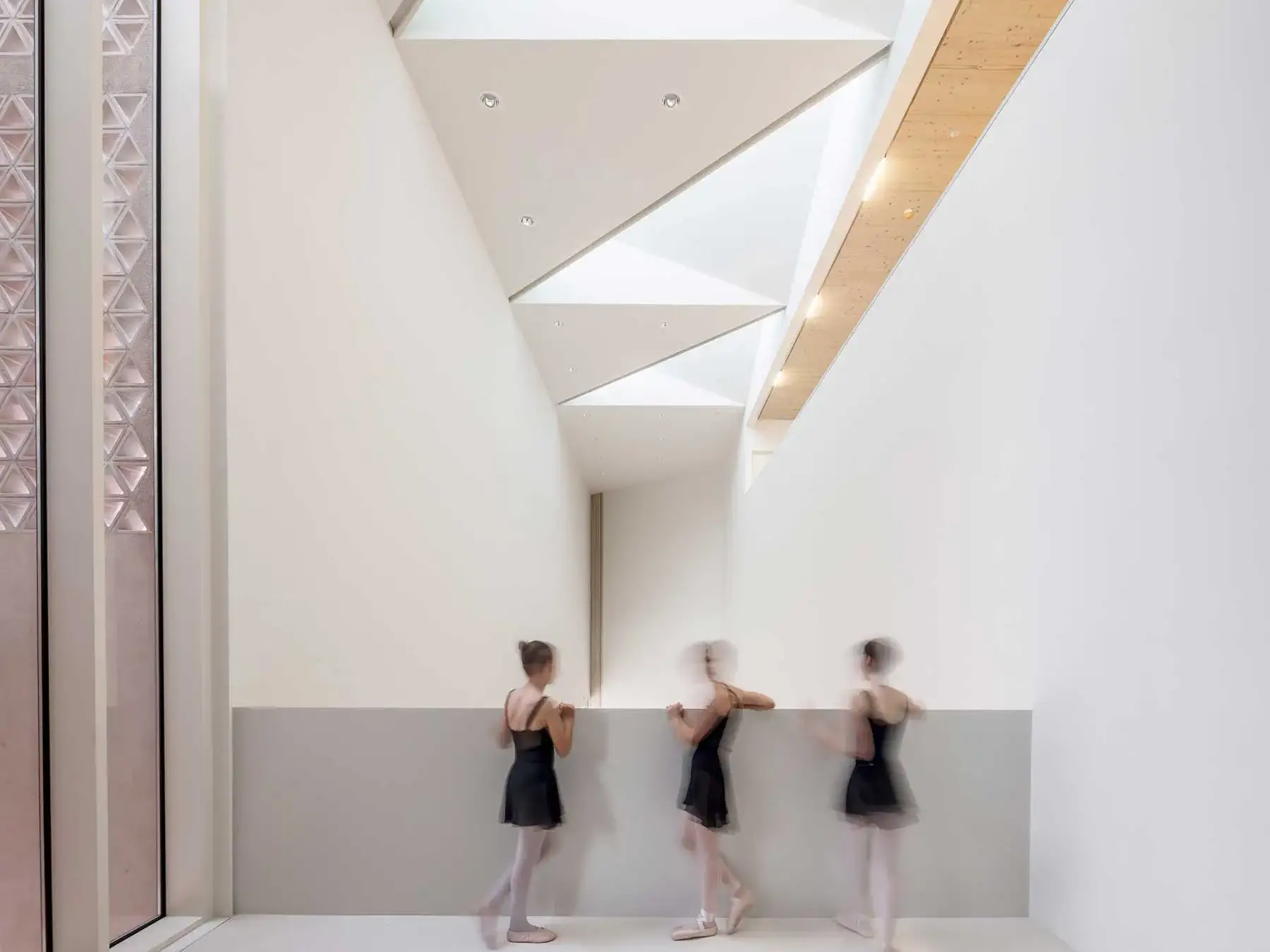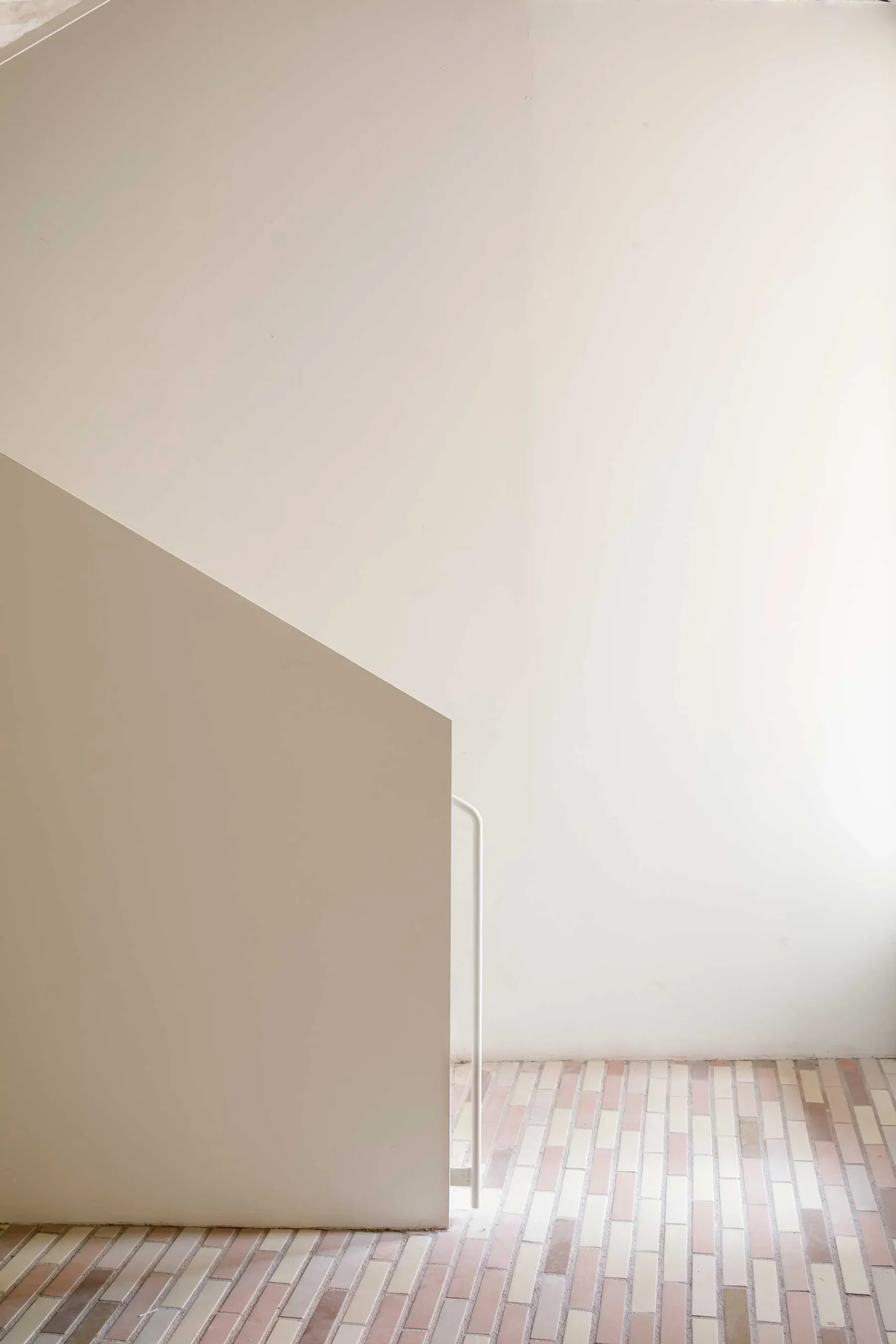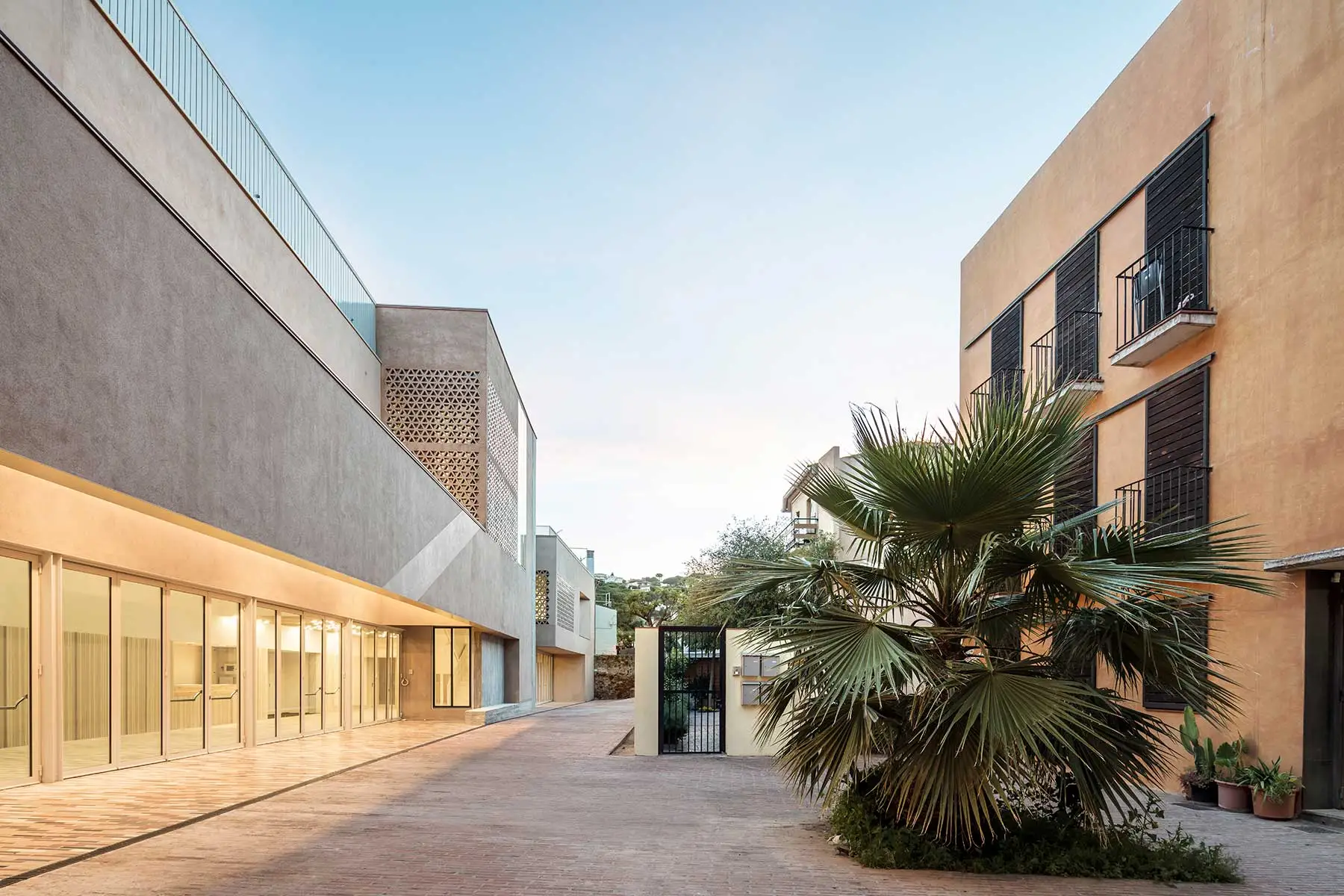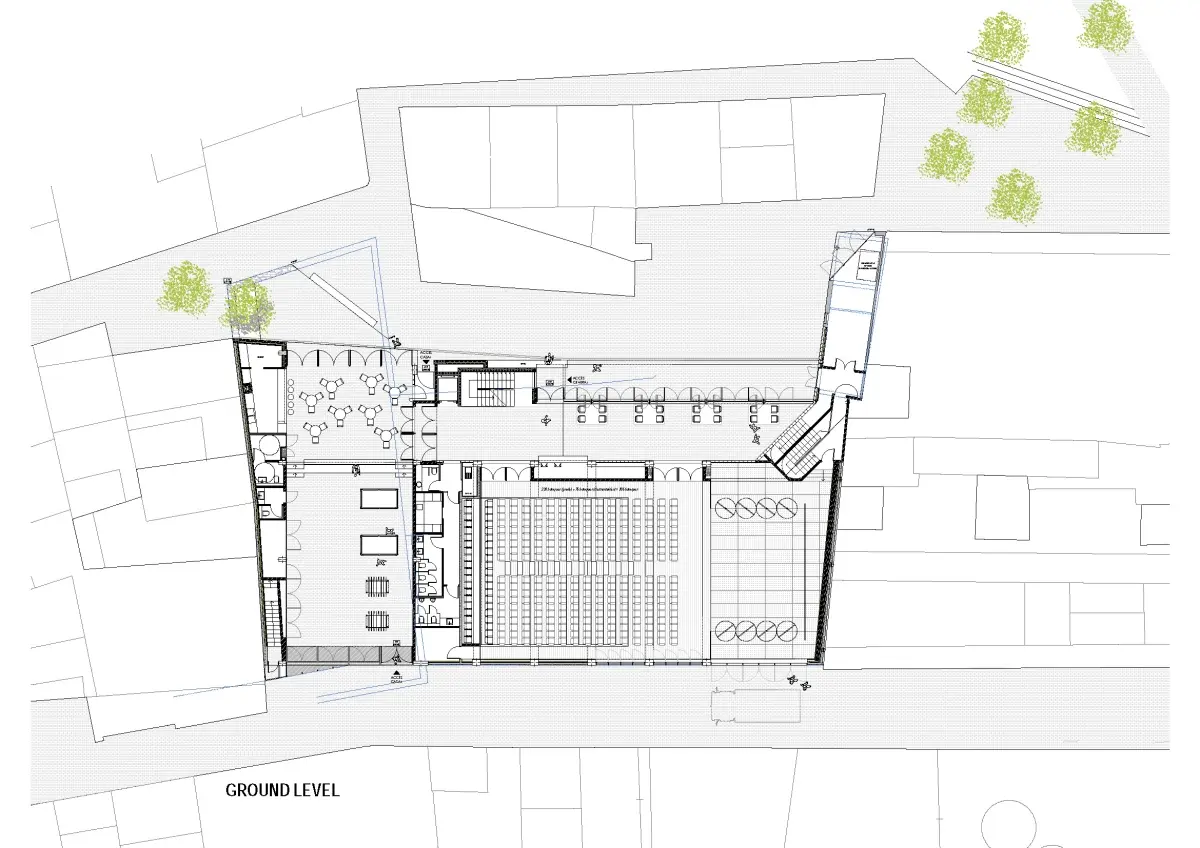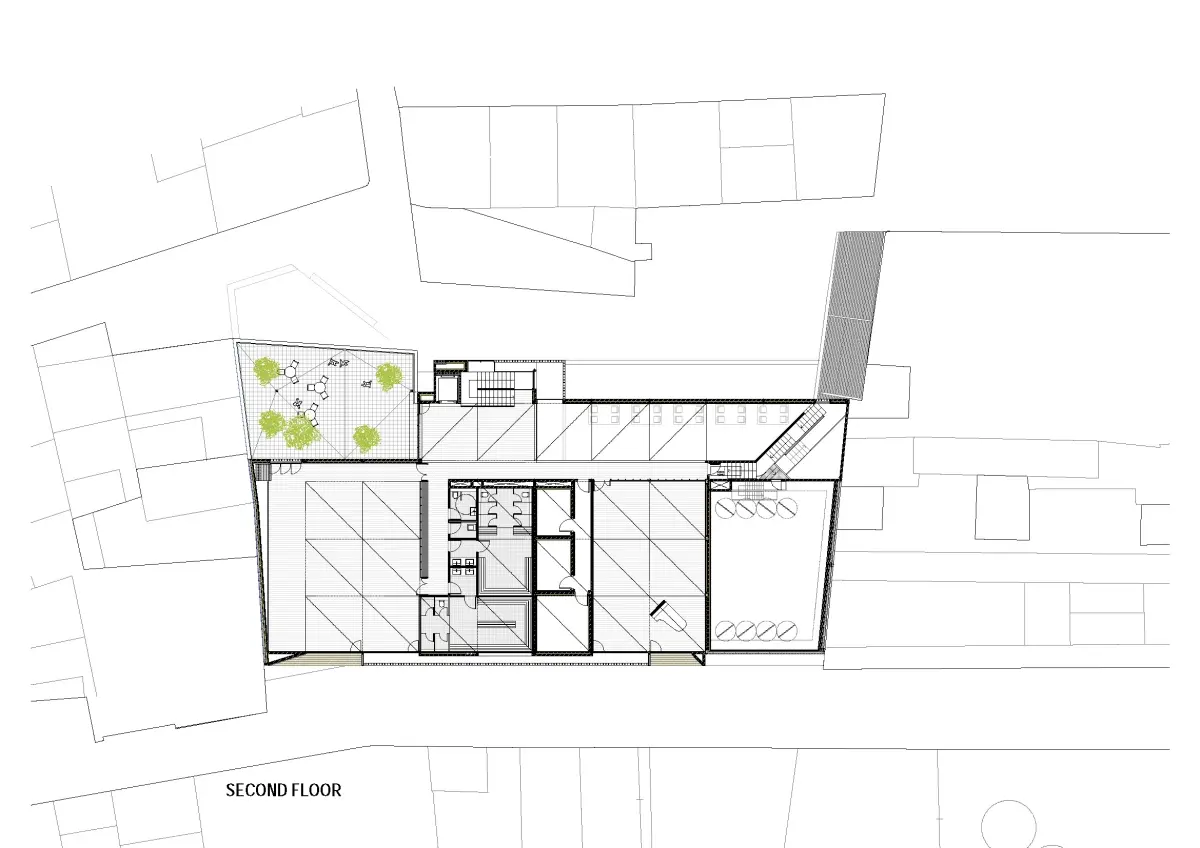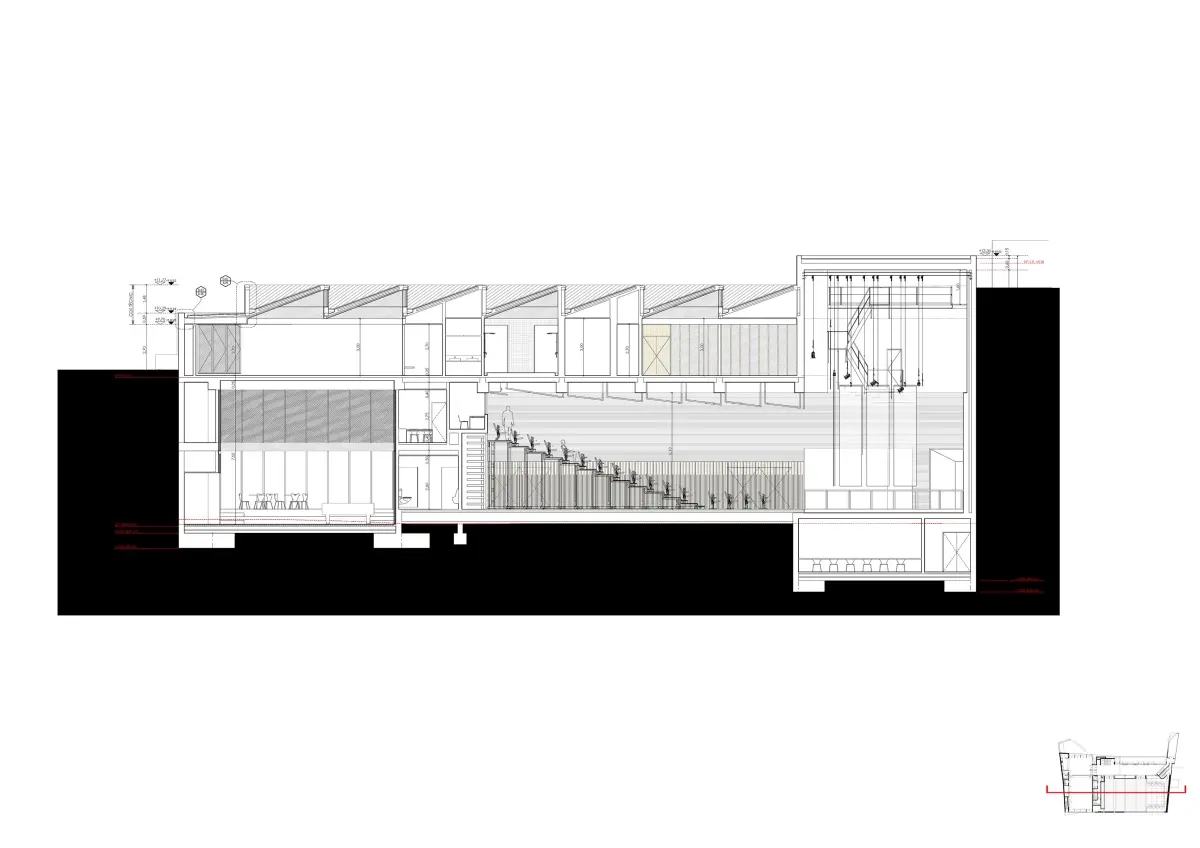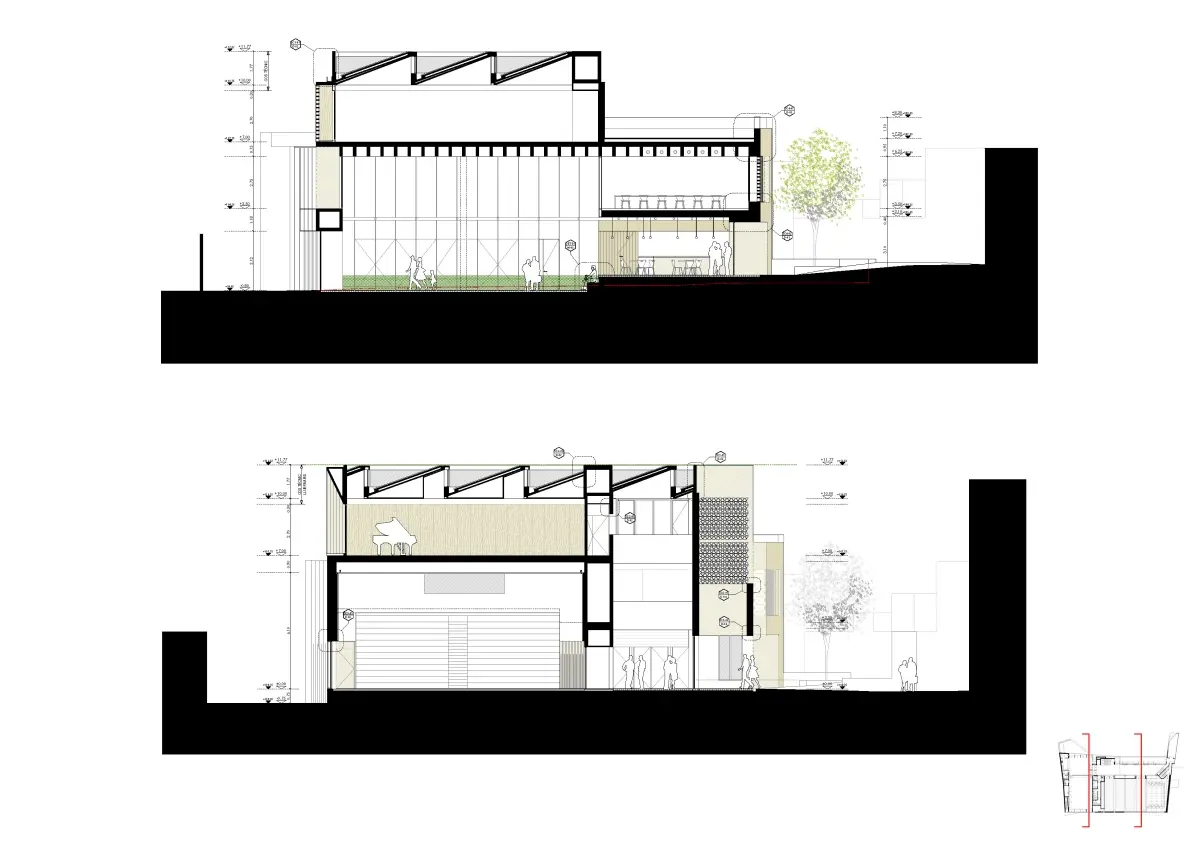Location
Badalona, Barcelona
Category
Design
Photography
Adrià Goula, FEM
Year
2015
In the old heart of Alella, where the hills slope gently towards the Mediterranean and the narrow streets carry the marks of centuries of life, a new building rises on the site of the town’s former Casal. The Casal was more than a social club — it was an extension of domestic life into the public realm. It was where neighbours met, where tables overflowed onto the cobbled street, where laughter mingled with music, and where the threshold between home and city dissolved into shared celebration.
The new Cultural Center has been conceived not as a replacement, but as a continuation of that spirit. It is a civic house for culture, for music, for dance, and for gatherings of all kinds, yet it is rooted in the tactile memory of Alella itself. The ambition was never to impose an alien monument but to weave a new layer into the existing fabric: an architecture that could belong to the town as naturally as the traces of time belong to its walls.
The first architectural move was subtle yet decisive: the entrance, which in the old Casal once faced the busy main street, was reoriented towards the quieter northern courtyard. In this inversion lies the project’s philosophy. What was previously the back, secondary and overlooked, becomes the true heart of arrival. The courtyard — modest in scale and surrounded by domestic constructions — turns into a welcoming prelude, a shared public square that softens the transition from town to Cultural Center.
This gesture reintroduces the blurred boundaries that defined the Casal. In its time, the social centre was never confined indoors; it spilled freely into the street. Chairs and tables spread out, conversations extended into the evening air, and architecture was porous. By drawing the building into dialogue with its courtyard, the new Cultural Center revives this spirit. It is a building that connects rather than separates, one that opens itself to the rhythms of daily life.
Every patch, every repair, every scar becomes part of the story. In Alella, façades are not uniform but layered — a living archive of time and change.
A continuous ceramic pavement unites square and atrium, transforming the ground floor into an interior extension of the public realm — a place for gathering, welcome, and celebration.
At its core lies the main hall, the largest and most technically demanding volume. It stretches along the street, giving the building its civic weight and anchoring it in Alella’s urban fabric. Perpendicular to it, the social centre unfolds as a connective passage, threading together the street and the courtyard, and functioning almost like a covered alley — a shaded route that is both building and pathway.
Above, the academy of music and dance occupies the top floor. Facing south, the classrooms are bathed in sunlight yet veiled behind a ceramic lattice that filters and modulates its intensity. Interrupted only by two generous openings, this lattice does more than protect from the sun: it gives the façade a porous quality, transforming what could have been a massive wall into a delicate screen. The lattice camouflages the scale of the building and brings a play of shadows that echoes the rhythms unfolding within.
Binding all these elements together is the atrium, a tall vertical space that extends across the three levels. More than a circulation core, it is the heart of the building: a light-filled void that creates visual connections, offers moments of pause, and ensures that orientation is always intuitive. From here, one becomes aware of the roof: a refined metallic structure punctuated with north-facing skylights, diffusing light evenly throughout the studios. In their quiet precision, these skylights assure that music and dance are practiced under serene, constant conditions.
The plaza is not outside the project but part of it — an open-air hall that welcomes encounters and festivities, extending the life of the Cultural Center into the public realm.
If the spatial organisation addresses program, the materiality roots the building in its place. Alella’s old town is marked by façades of plaster in warm earth tones, layered over centuries with repairs, extensions, and modifications. These walls carry imperfections and scars — traces of adaptation, of weather, of time. They are never uniform. They speak of life lived, of beauty born of irregularity.
Faced with the challenge of building a public structure far larger than its immediate neighbours, the architects chose not to impose monumentality but to domesticate scale through materiality. The strategy was not to polish but to patch. The exterior is clad in a graphene-based stucco, tinted in earthy ochres to echo the local palette. Yet it is not applied as a single, smooth skin. Instead, it is worked in a collage of treatments: some areas are polished to a soft sheen, others left coarse and rugged, others combed to reveal subtle linear patterns.
The result is a façade that shifts and changes with the light. Morning sun reveals delicate striations, noon highlights the smoother planes, dusk deepens the shadows within the rough textures. It is a building that never looks the same twice, one that embraces imperfection as its identity. By decomposing one material into many expressions, the façade evokes the accumulated layers of Alella’s older houses — a continuity of scars, patches, and textures that belong not to an era but to a way of living.
This patchwork approach also serves to soften the Cultural Center’s scale. Though larger than any nearby construction, the varied surfaces fragment the building’s presence into approachable parts. What might have been overwhelming becomes familiar, even domestic. In this way, materiality becomes not only an aesthetic choice but a social one: a tool to ensure that the town can recognise itself in its new civic house.
By altering surface and treatment, the earth-toned stucco becomes a collage of shadows and reflections, echoing the layered imperfections of Alella’s historic walls.
At street level, two programs reveal their distinct characters: the opaque volume of the auditorium and the transparent façade of the casal, veiled by a perforated skin that filters excessive sun.
Among the building’s defining features is the Aina lattice. Composed of ceramic modules, it veils the large openings that public buildings inevitably require. On the one hand, it is a technical device: a solar filter that shields the southern classrooms from excessive heat and glare. On the other, it is a poetic one: a porous veil that modulates scale, casting shadows that change hour by hour, season by season.
From outside, the lattice blurs the scale of the windows, turning expanses of glass into patterns of light and void. From inside, it frames the town in fragments, reminding students of dance and music that they are not isolated but deeply embedded in Alella. The lattice allows the building to breathe — neither sealed nor exposed, but in balance. It is an element that captures the essence of Mediterranean architecture: a filter that tempers, shades, and reveals, all at once.
Throughout the building, one perceives a deliberate dialogue of contrasts. On the one hand, the southern façade, aligned with the main street, asserts a sober civic character: dignified, formal, and restrained, in tune with the weight of public life. On the other, the northern façade opens onto the courtyard in a far more domestic scale, breaking down into smaller volumes and textured surfaces that resonate with the intimacy of surrounding houses. It is in this interplay — monumental versus approachable, public versus familiar — that the Cultural Center finds its equilibrium. The building stands as a civic institution, yet never loses touch with the human fabric of the town.
Inside, this duality is translated into a sequence of carefully orchestrated atmospheres. The atrium, tall and luminous, conveys generosity and openness, yet its clarity and proportion prevent it from ever feeling overwhelming. The studios, shielded by lattices, are protective and serene: places for concentration, learning, and rehearsal, where daylight arrives filtered and gentle. By contrast, the main hall is cloaked in darkness, a focused space of performance where attention is naturally drawn to sound and movement. Together, these spaces form a choreography of moods, guiding visitors from openness to intimacy, from brightness to shadow, mirroring the rhythms of daily life and cultural expression.
The Civic Center is conceived as an interior street — a passage that crosses the building from façade to façade, extending the rhythms of the town within its walls.
Within the main hall, materiality takes on yet another role: acoustics. The space is clad in a bespoke ceramic element called Mambo & Mamba, designed by FEM specifically for this project. The black tiles are not only visually striking but highly performative, designed to absorb and reflect sound in just the right balance.
This flexibility is vital, for the hall is conceived as a truly polyvalent space. It must host cinema screenings, orchestral concerts, intimate theatre, community assemblies, and festive celebrations. Each activity demands different acoustic conditions, and the ceramic skin allows the space to adapt. In its presence, sound is not an afterthought but a material in itself, carefully shaped and tuned.
Visually, the dark ceramic envelops the space with intimacy. Its slight sheen interacts with stage lighting, creating subtle highlights that shift with each performance. The hall becomes both neutral and dramatic, able to recede into the background or to assert its presence depending on the needs of the event. In this way, the Cultural Center is not simply a container but an instrument — a resonant chamber that belongs as much to the town’s cultural life as the voices and movements that animate it.
The Mambo & Mamba ceramic bricks, designed with acoustic precision, transform the auditorium into a flexible chamber capable of hosting cinema, theatre, concerts, and community celebrations.
On the upper floor, the Aina lattice filters light and scale, while large openings framed in iroko announce the public character of the Cultural Center.
But perhaps the true strength of the project lies in how these atmospheres are anchored by materiality. The façades evoke the imperfect beauty of Alella’s historic plasterwork, where time has layered scars, patches, and textures. This is amplified by the custom-designed ceramic elements — the porous veil of the Aina lattice, softening light and camouflaging scale, and the black acoustic tiles of Mambo & Mamba, designed by FEM specifically for this project. Each element has a functional role — shading, filtering, tuning sound — yet also contributes to the building’s emotional presence. These pieces are not add-ons but integral parts of the architecture, where design and performance merge to create a space both technically refined and deeply human.
Custom ceramic bricks by Cerámica Cumella reinterpret the paving of the rear square, extending its material presence into the Cultural Center’s interior spaces.
Equally significant is how this language of materiality extends beneath our feet. The ground floor is conceived as a natural prolongation of the public realm, where the ceramic paving of the rear square continues seamlessly into the building. Crossing the threshold, one steps not onto a new surface but onto the same tactile continuity, expressed through a bespoke ceramic brick floor crafted by Cerámica Cumella specifically for this project.
It is this element that gives identity to the atrium: a floor whose warmth and texture anchor the space where acts of welcome take place and where the glazed doors can fold open to unite inside and out. By carrying the material of the square into the Cultural Center, the architecture dissolves the boundary between exterior and interior, allowing the courtyard to flow inward and transform into a civic hall. This continuity is not only visual but emotional, reminding visitors that the building is an extension of Alella itself — a place where the life of the town finds its reflection in the very ground they walk upon.
An austere palette of materials, composed with precision, allows the smallest details to speak — light, texture, and craft becoming the true ornaments of the space.
Alella’s Cultural Center is more than a sum of its functions. It is not only a theatre, not only a school, not only a social hub, but a frame for community life. By embracing imperfection over polish, collage over uniformity, and porousness over closure, the project grounds itself in the heritage of Alella while opening a horizon for the future. It recalls the conviviality of the old Casal, yet reinterprets it through textures and forms that speak to the present. In its walls, one finds continuity; in its light, possibility; in its atmosphere, belonging. It is a civic house for culture, but also a house for life — a place where voices resonate, where music and movement unfold, and where the town can see itself reflected in architecture that is at once timeless and alive.
